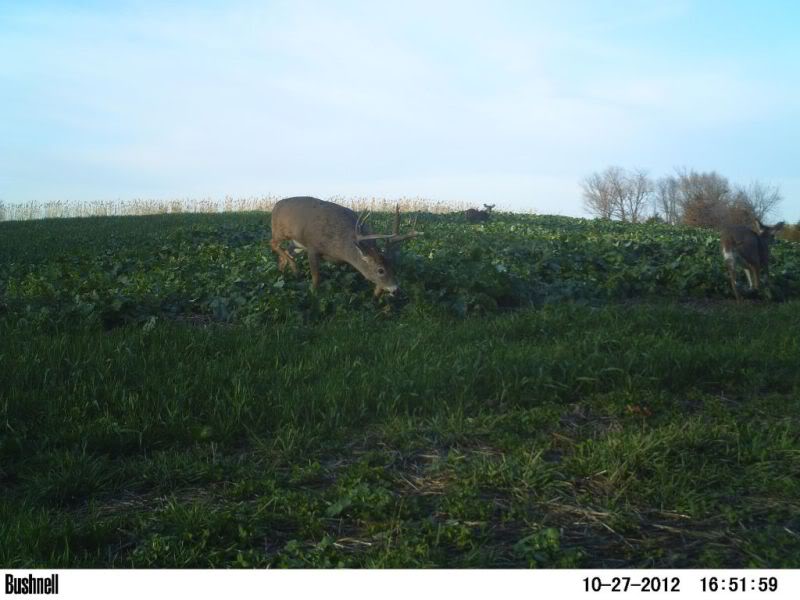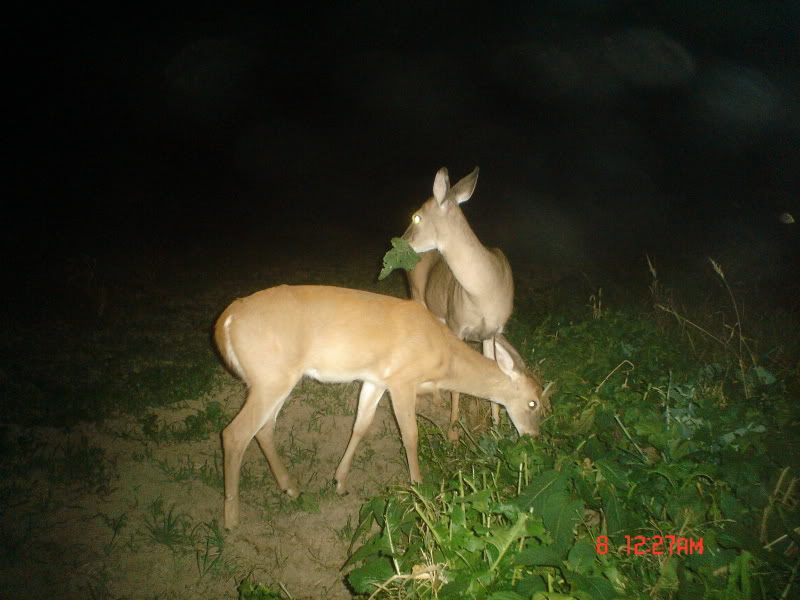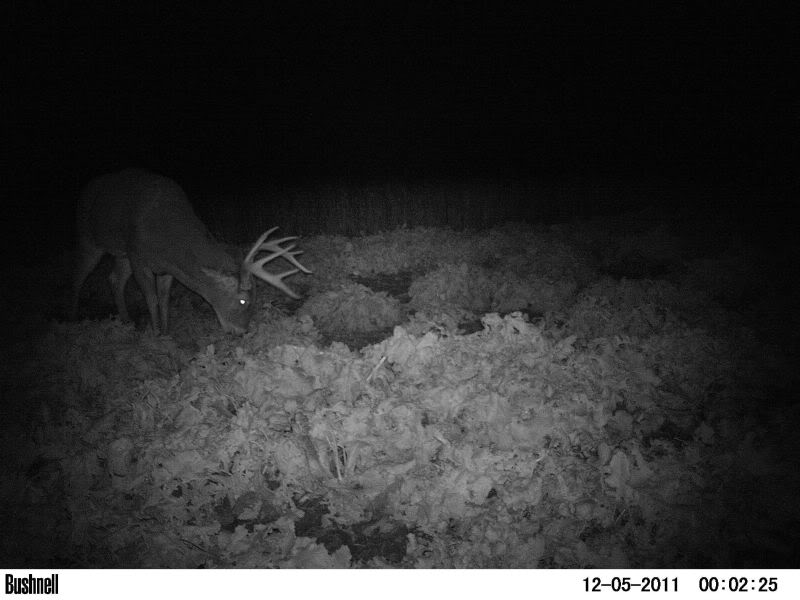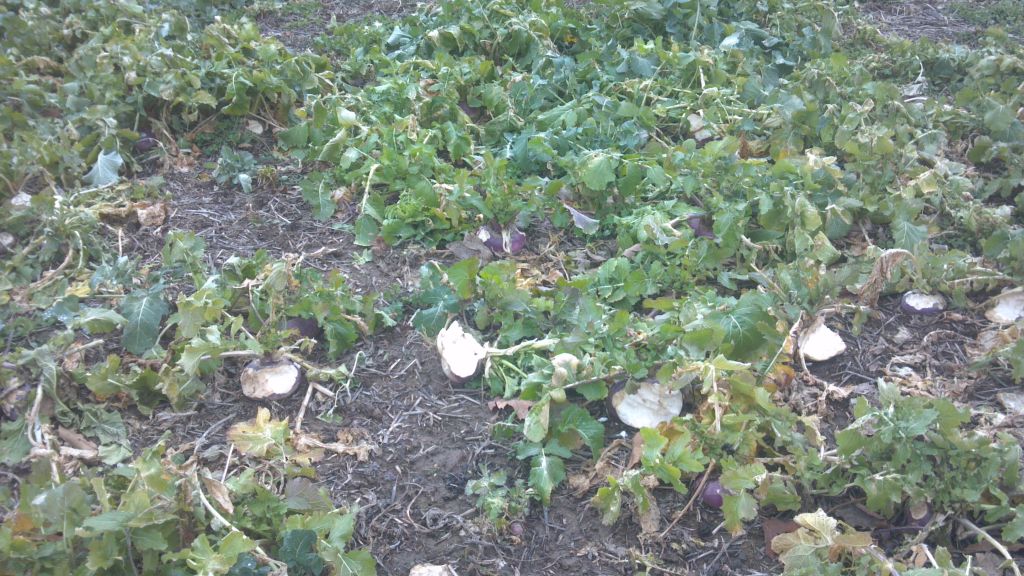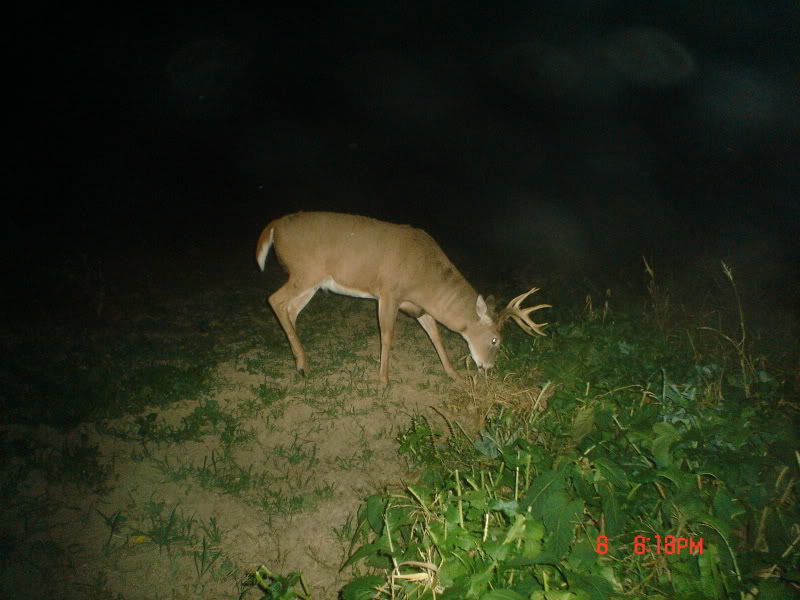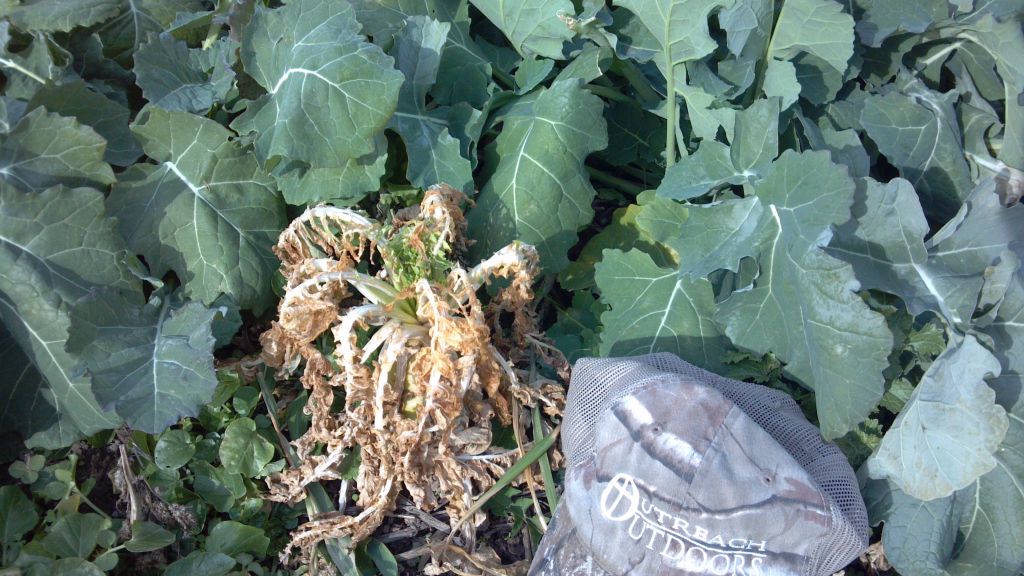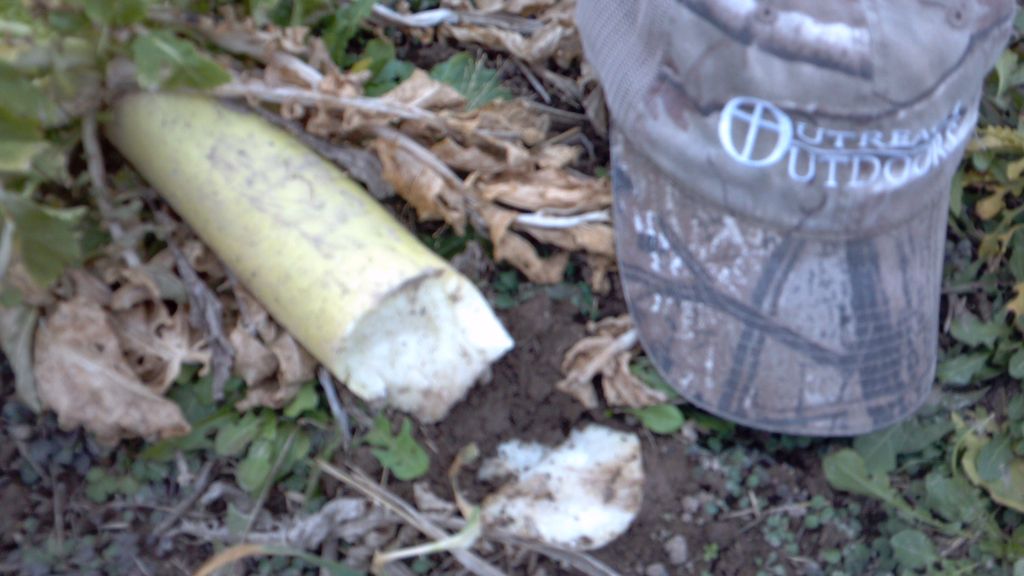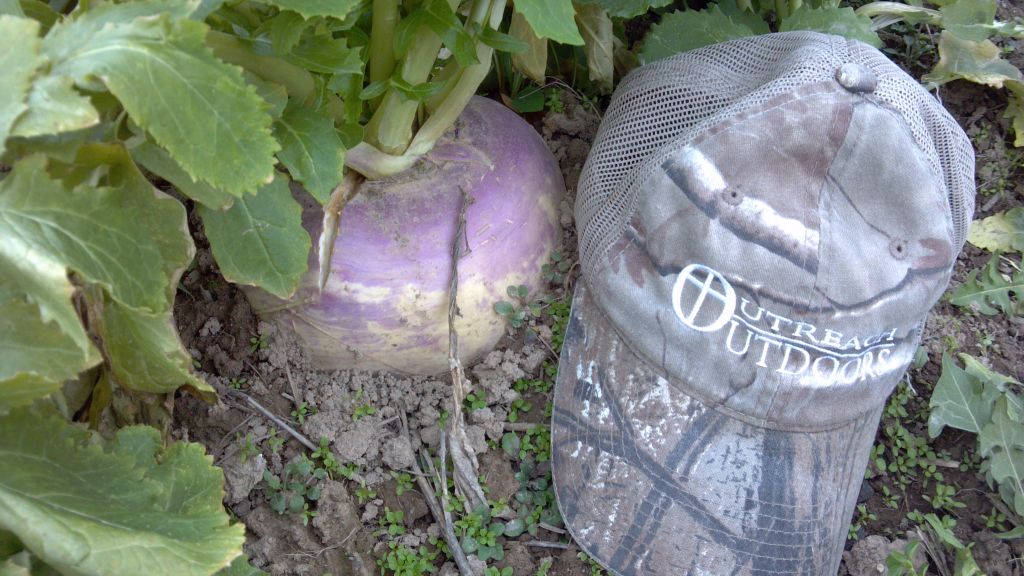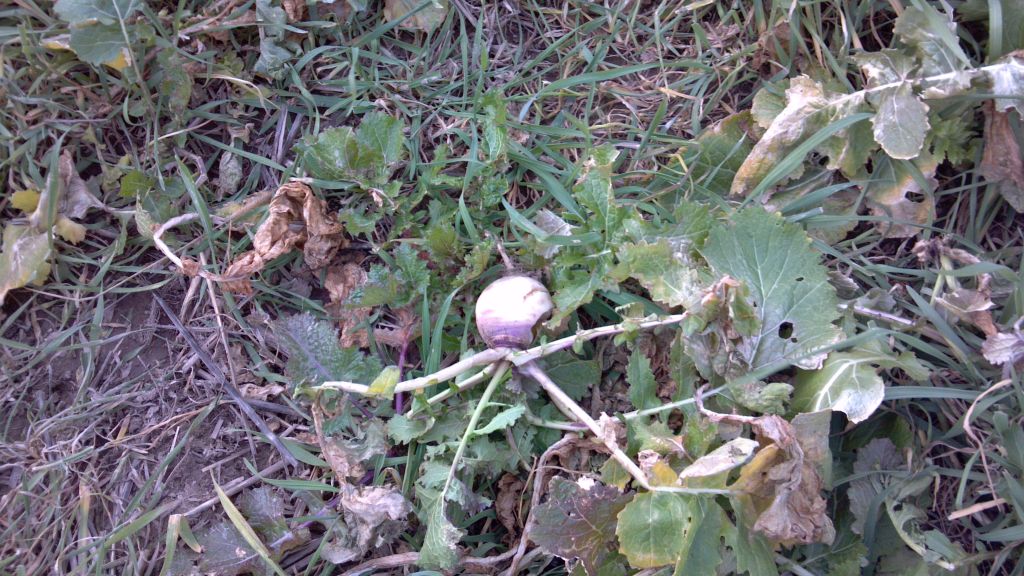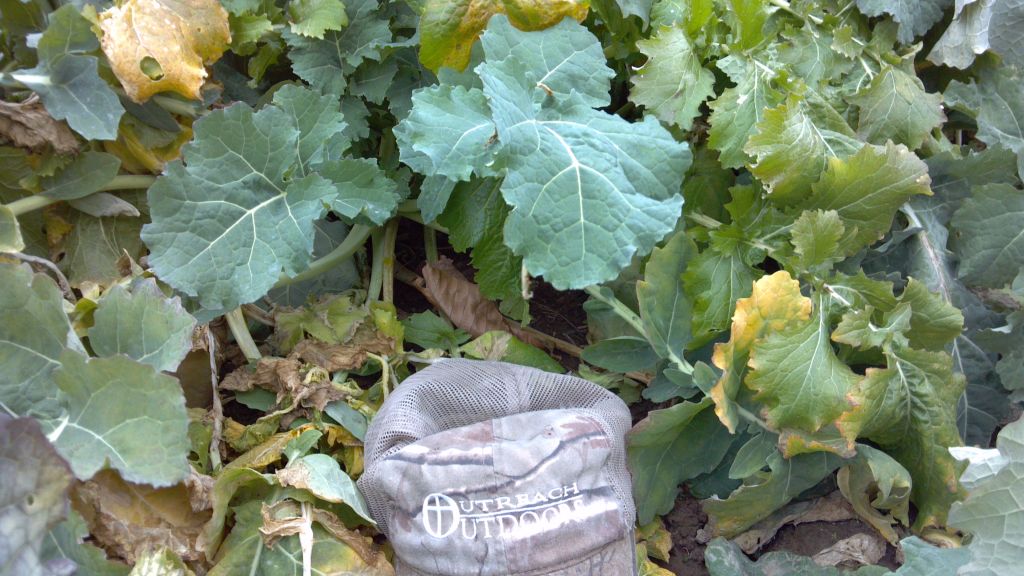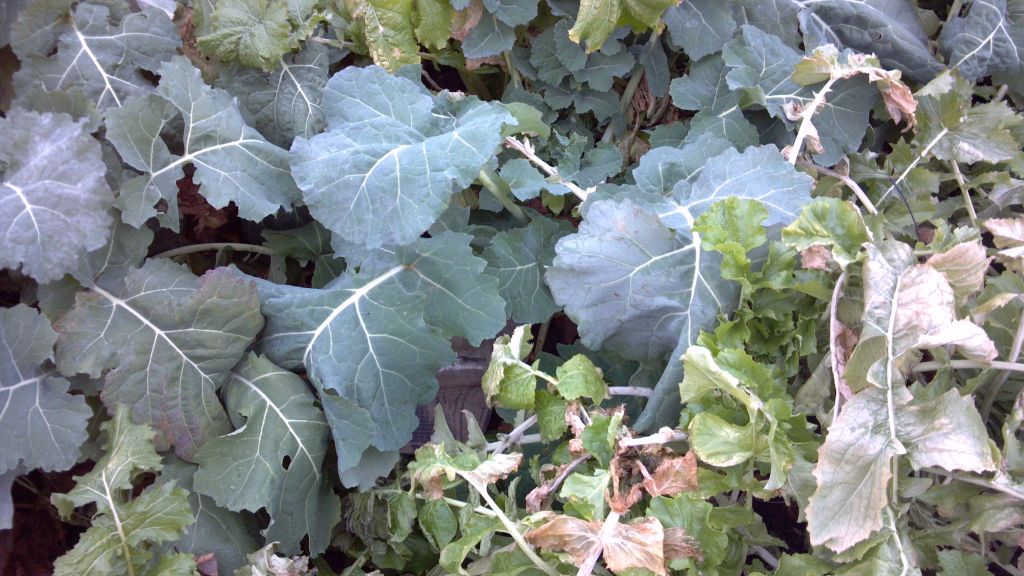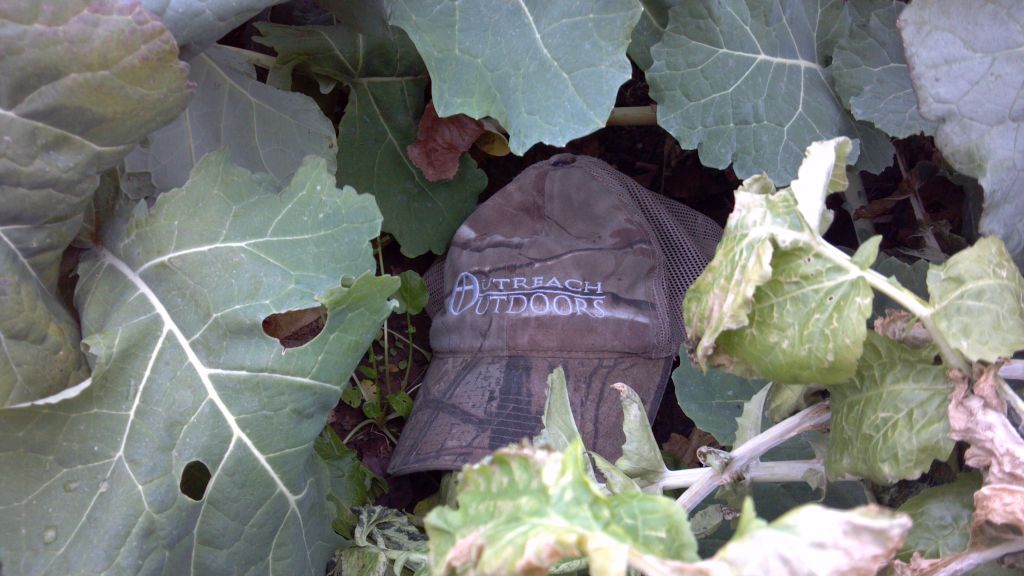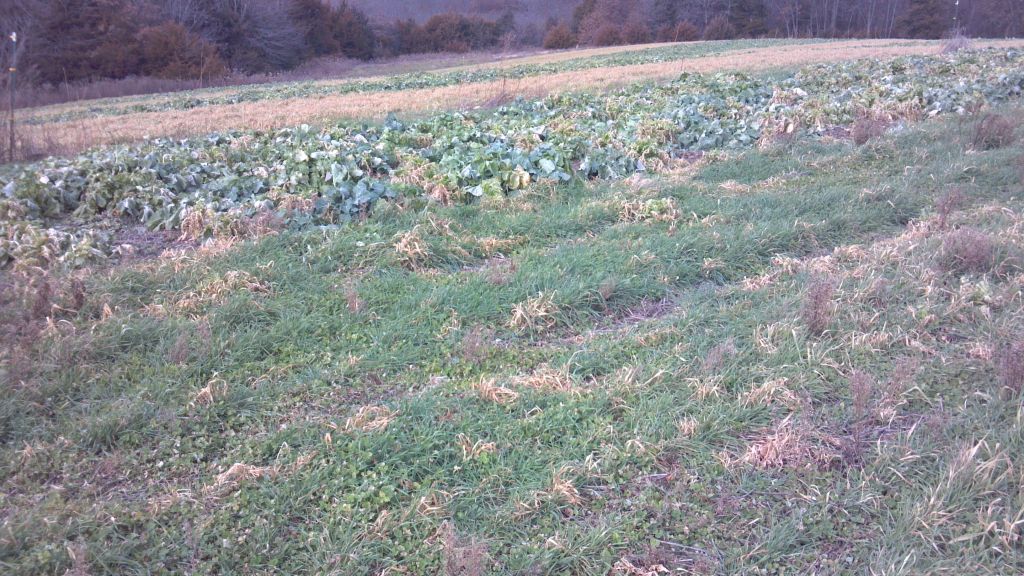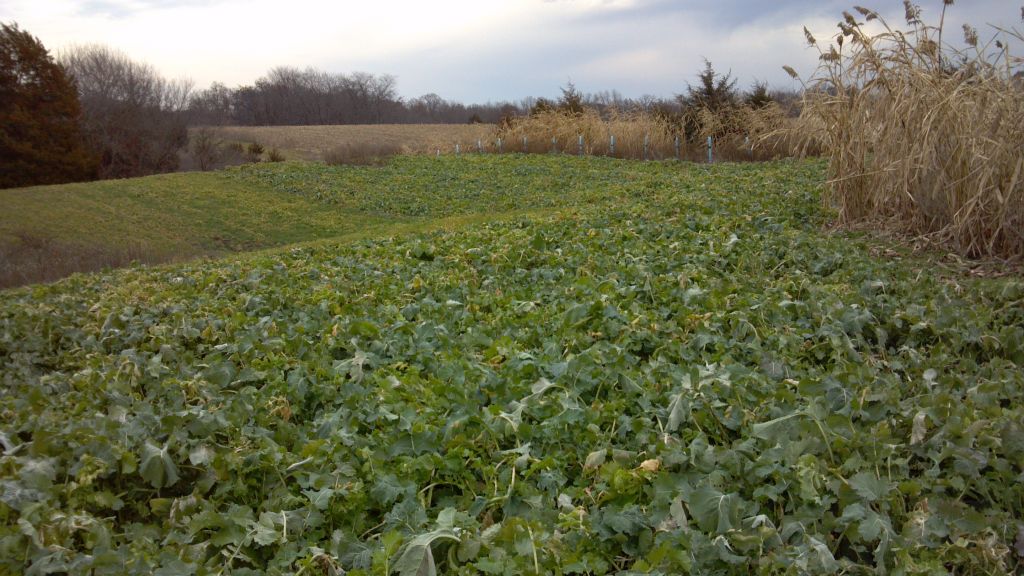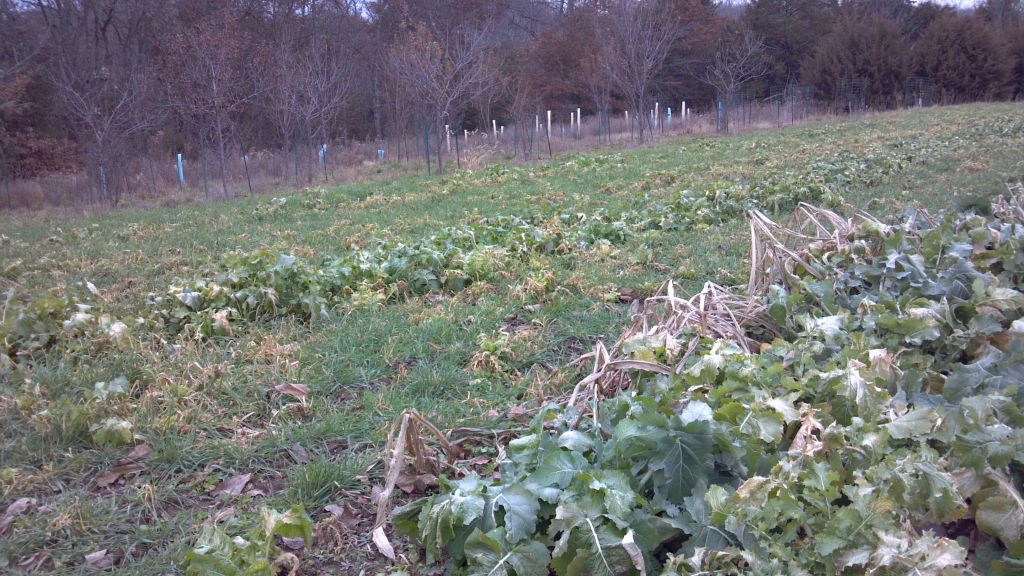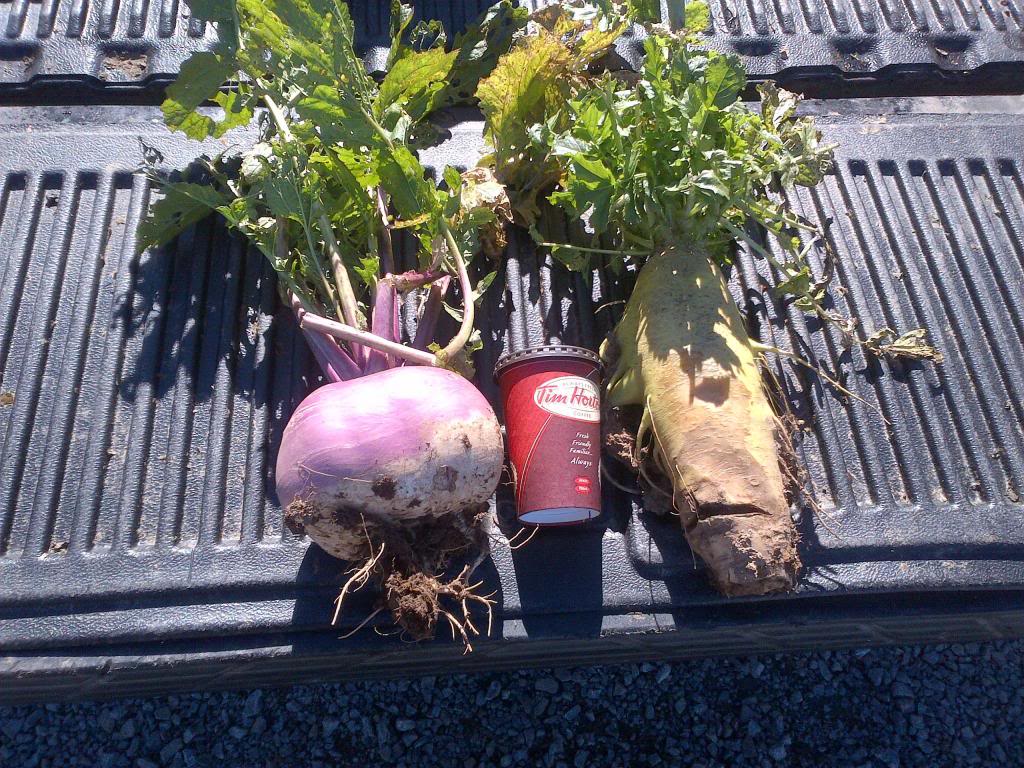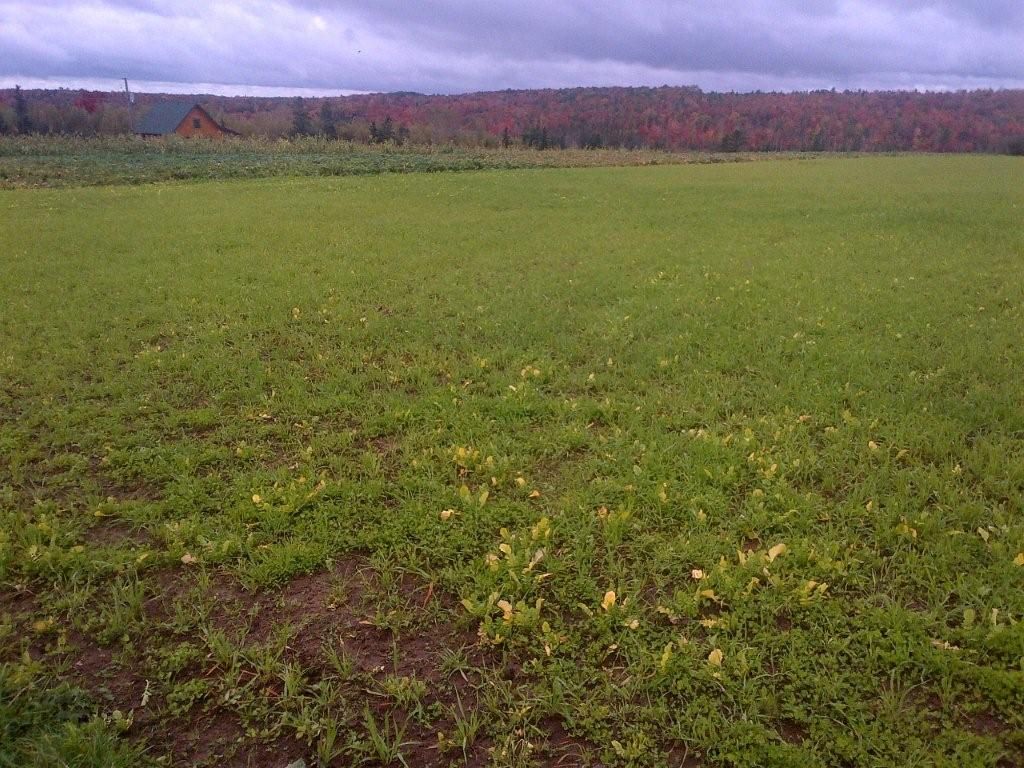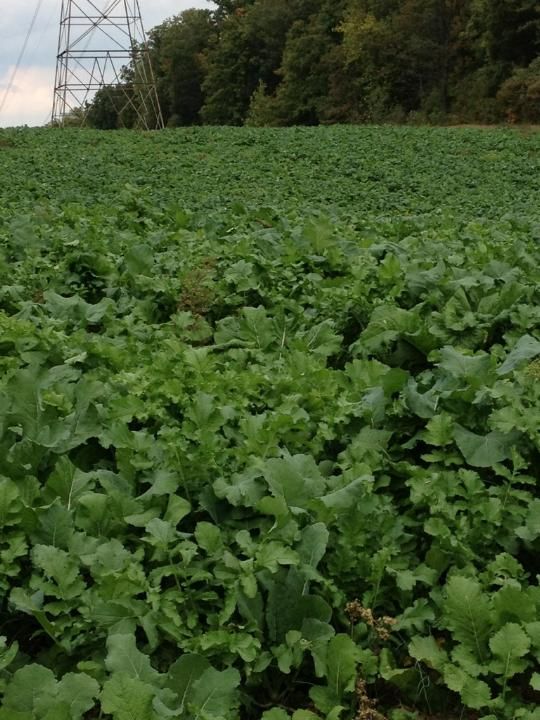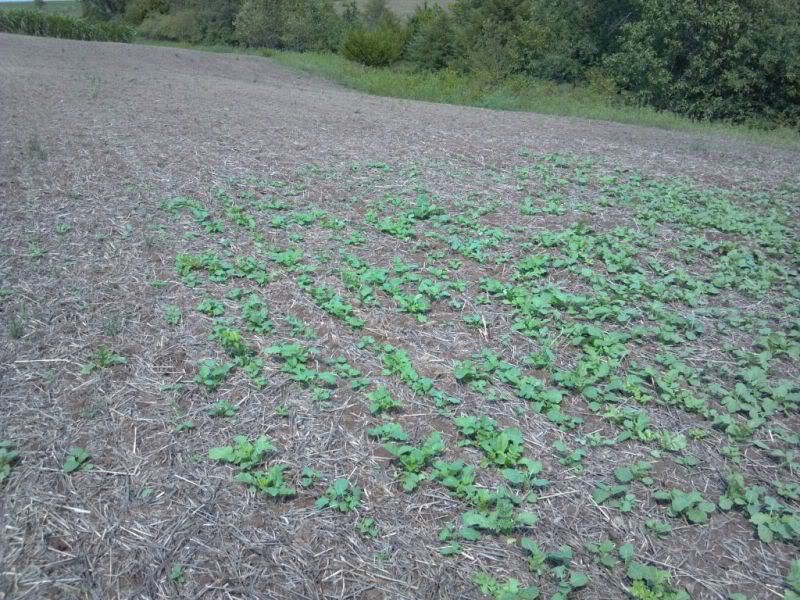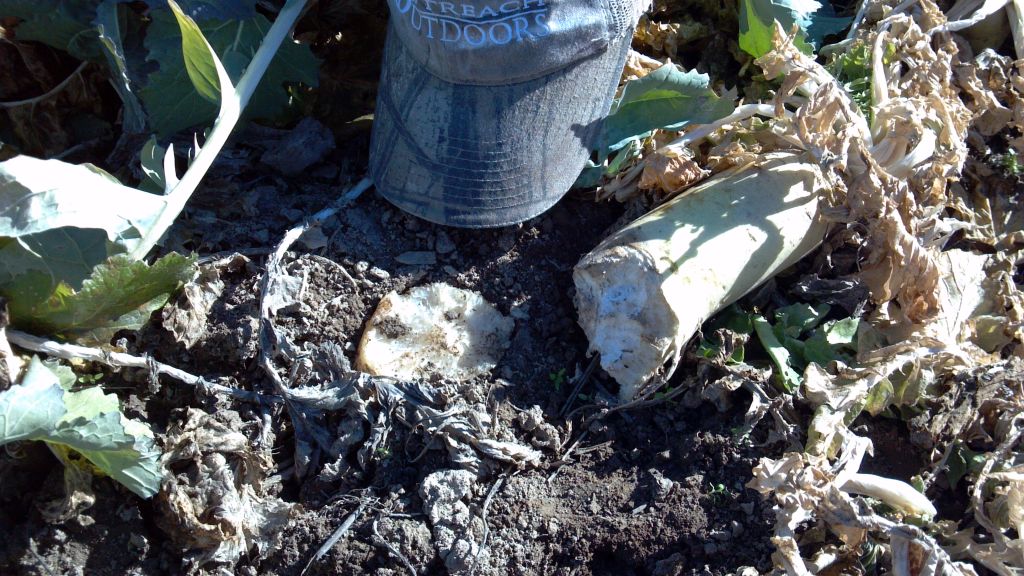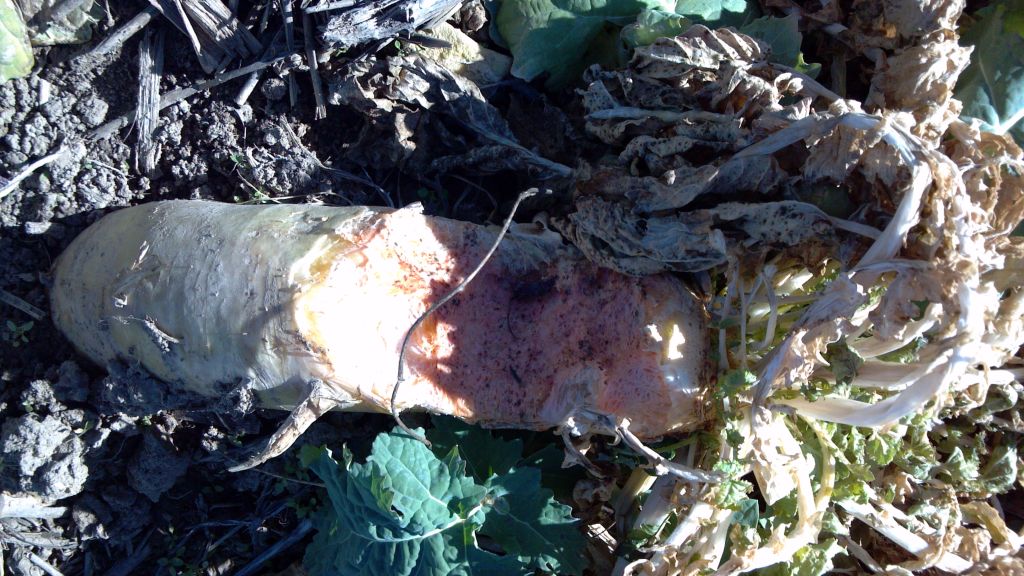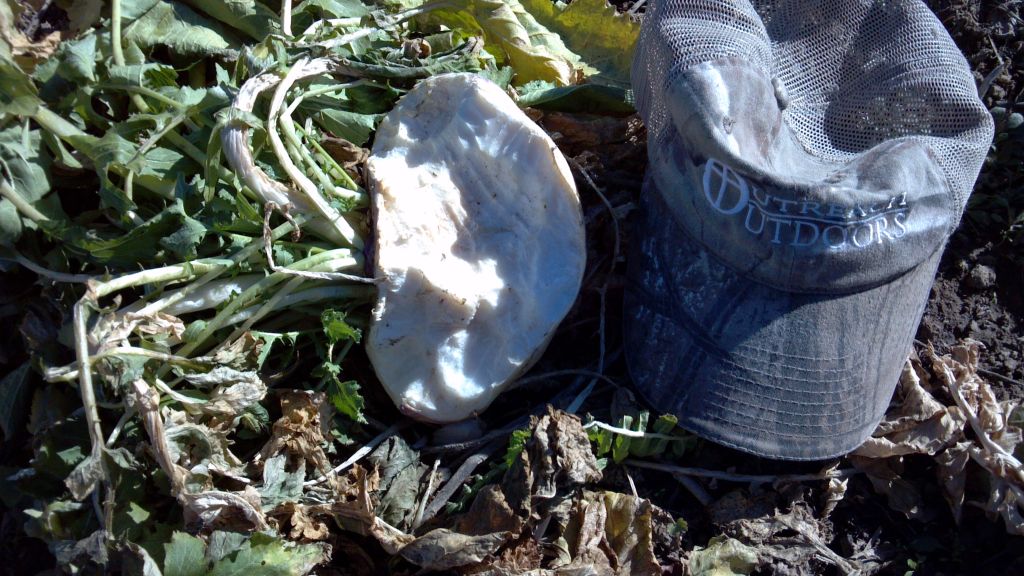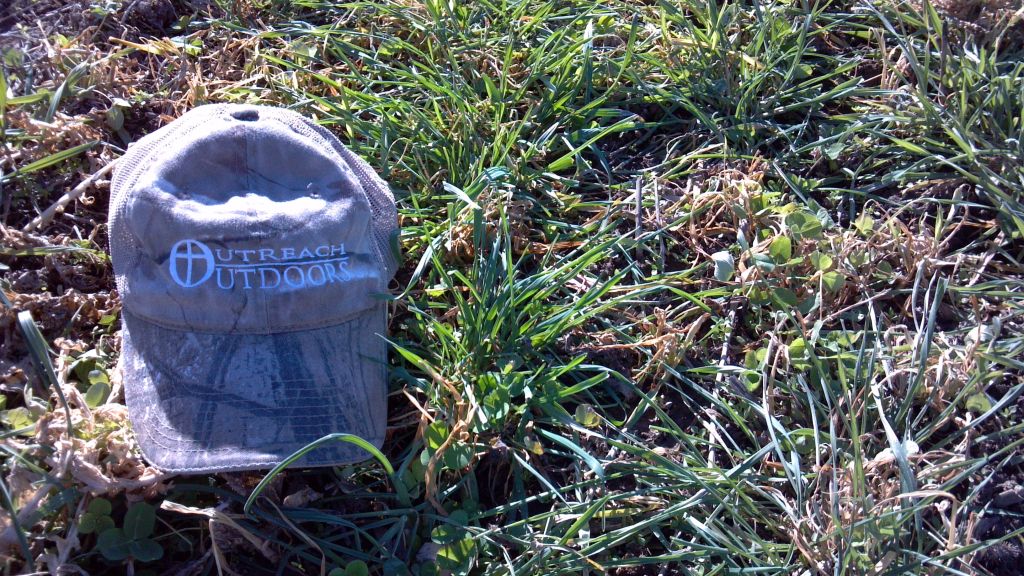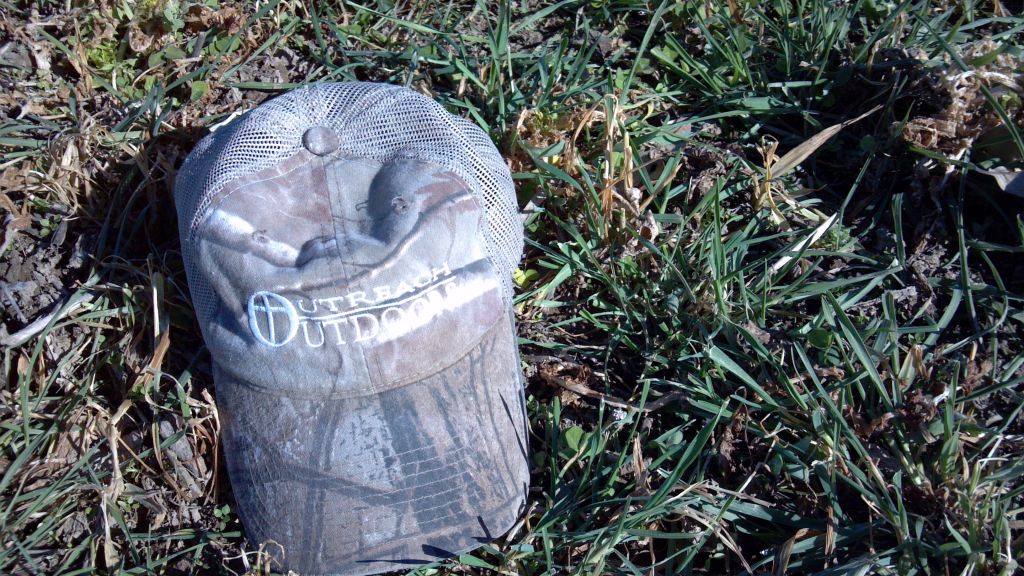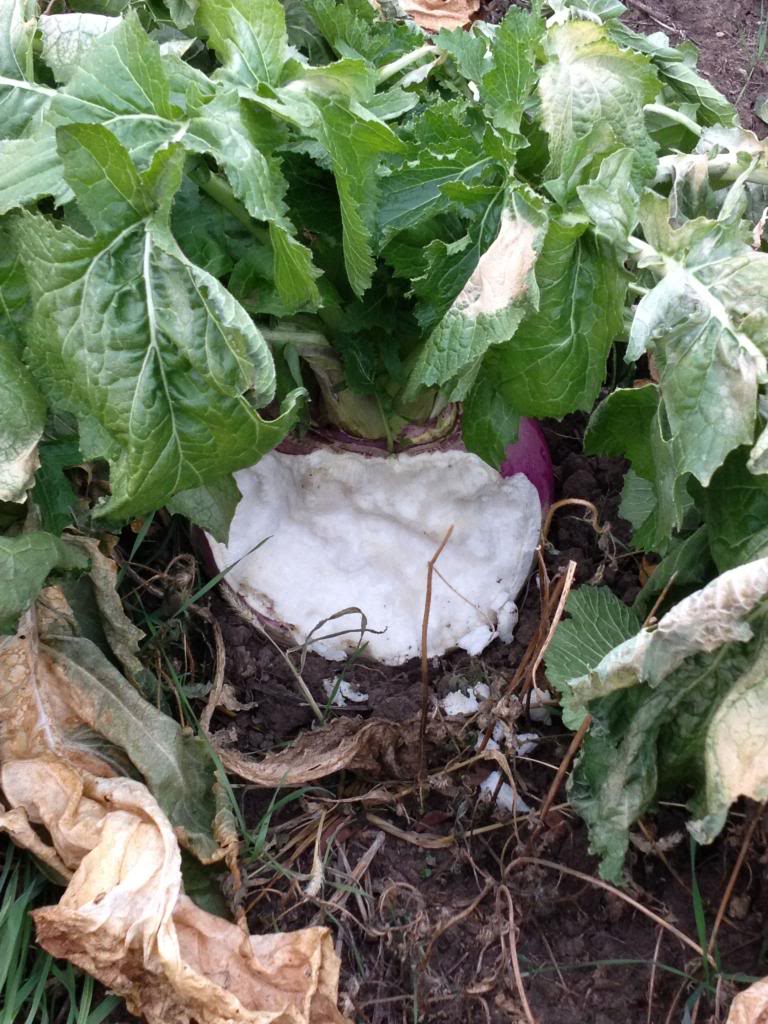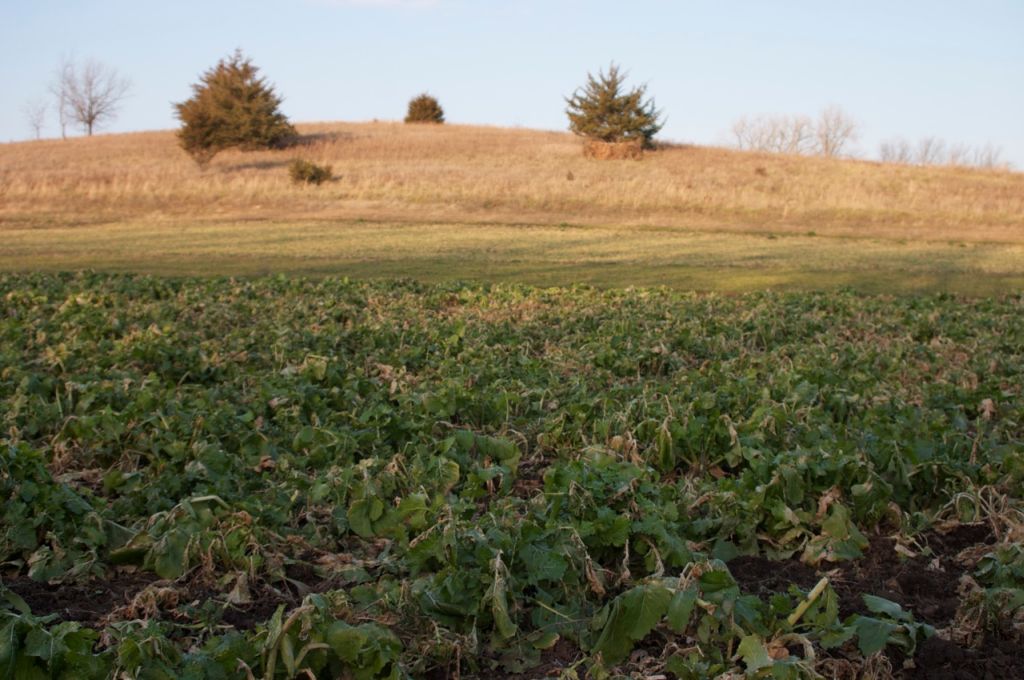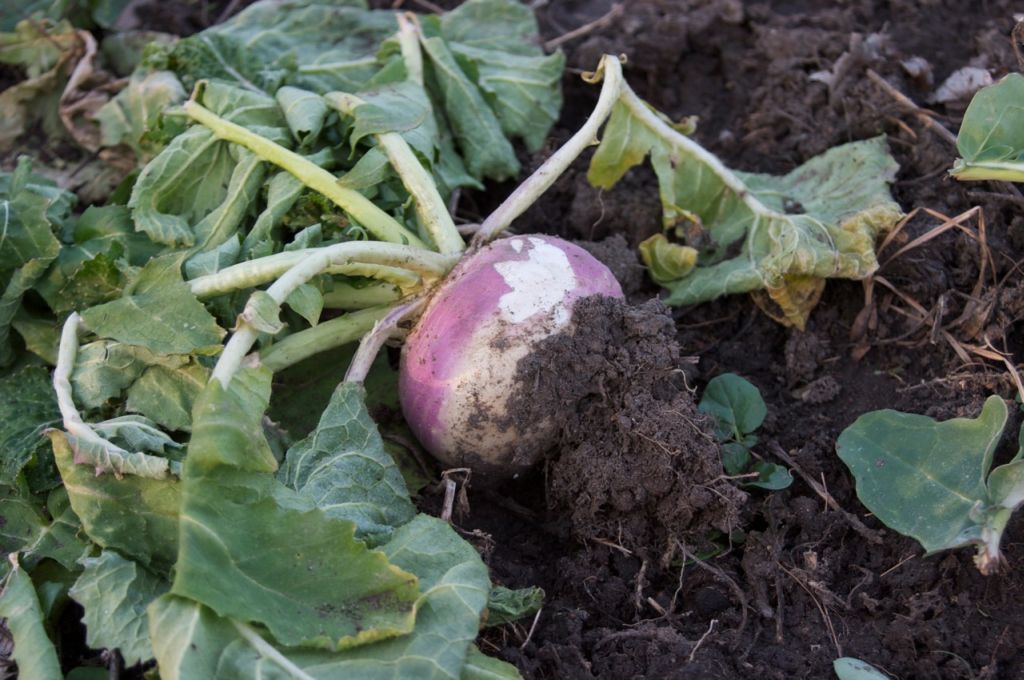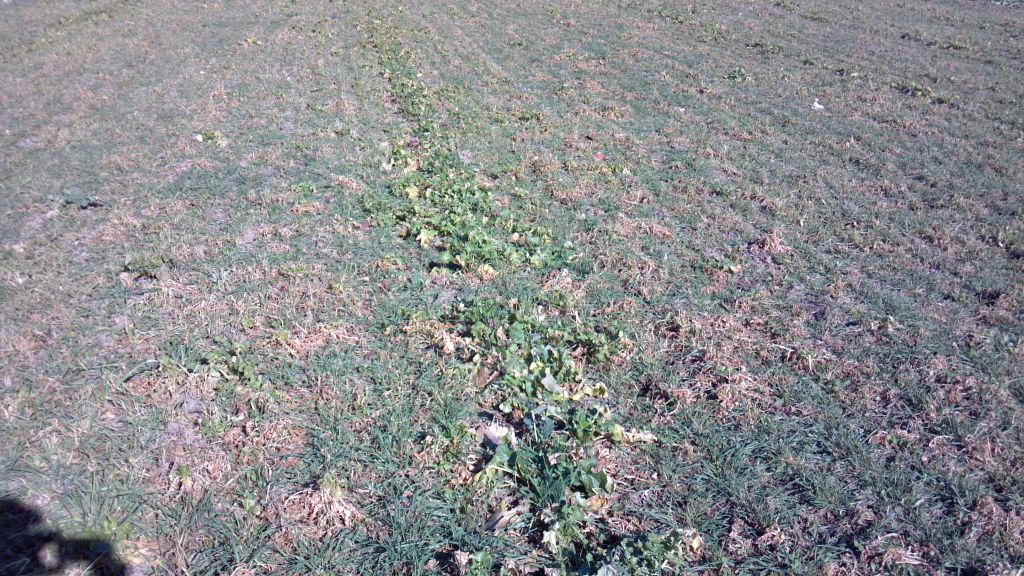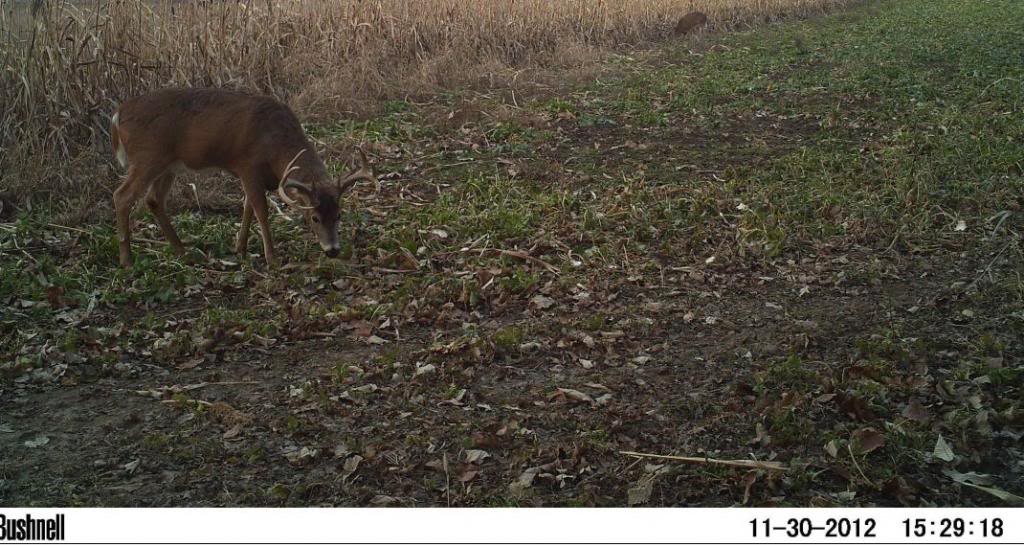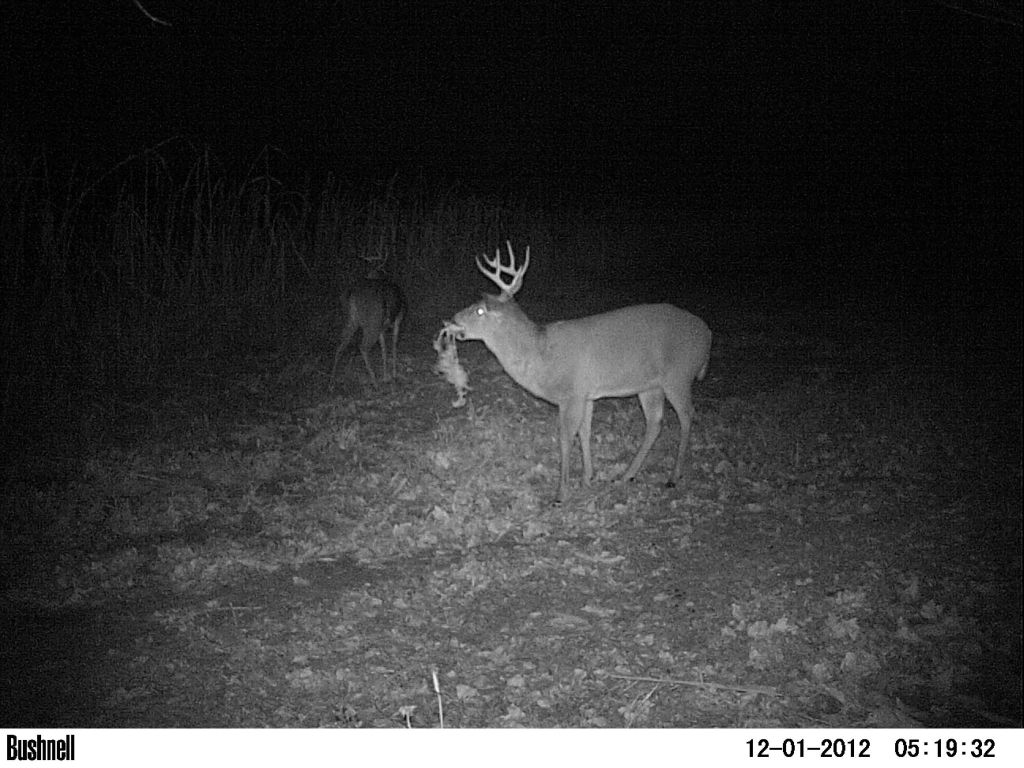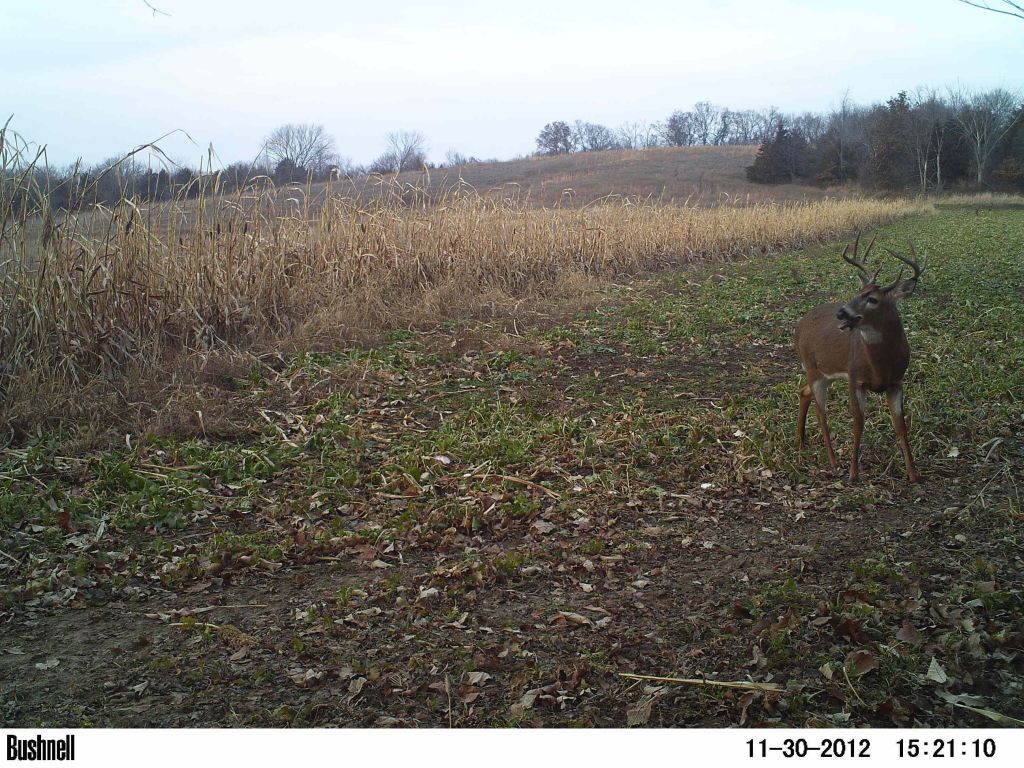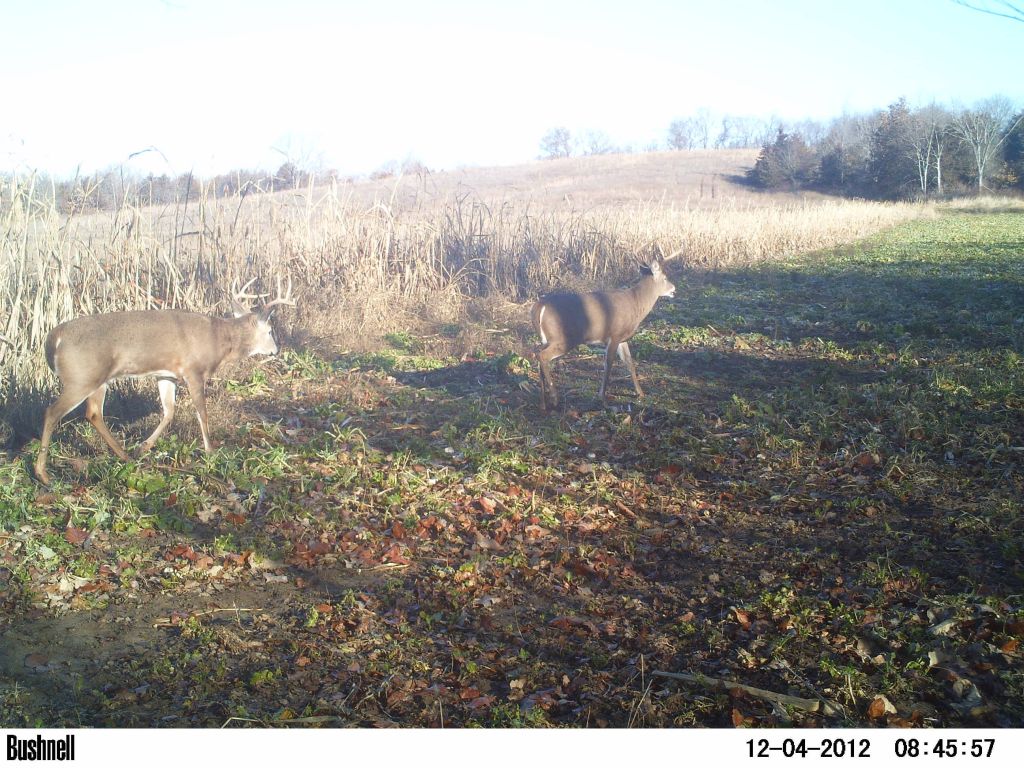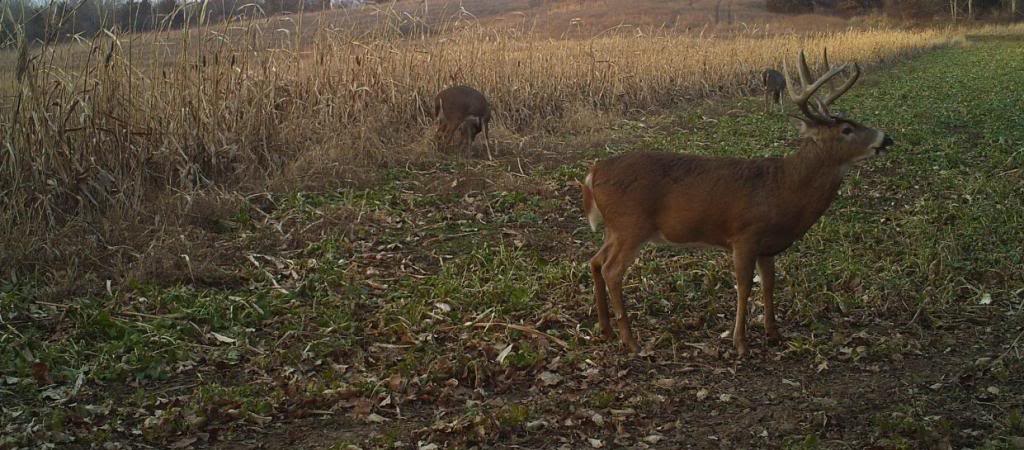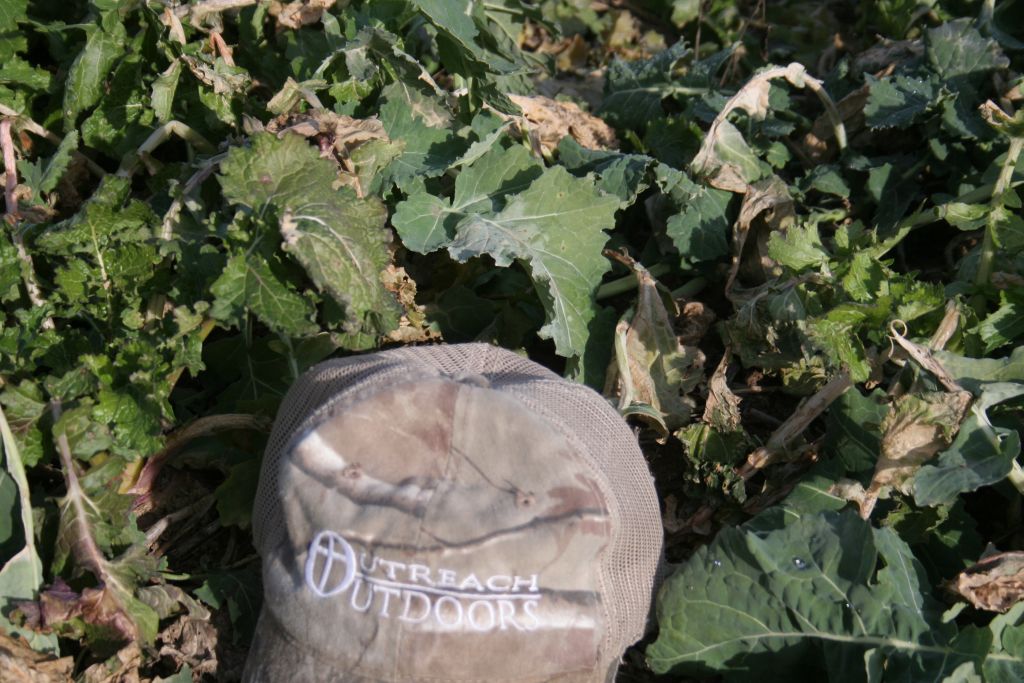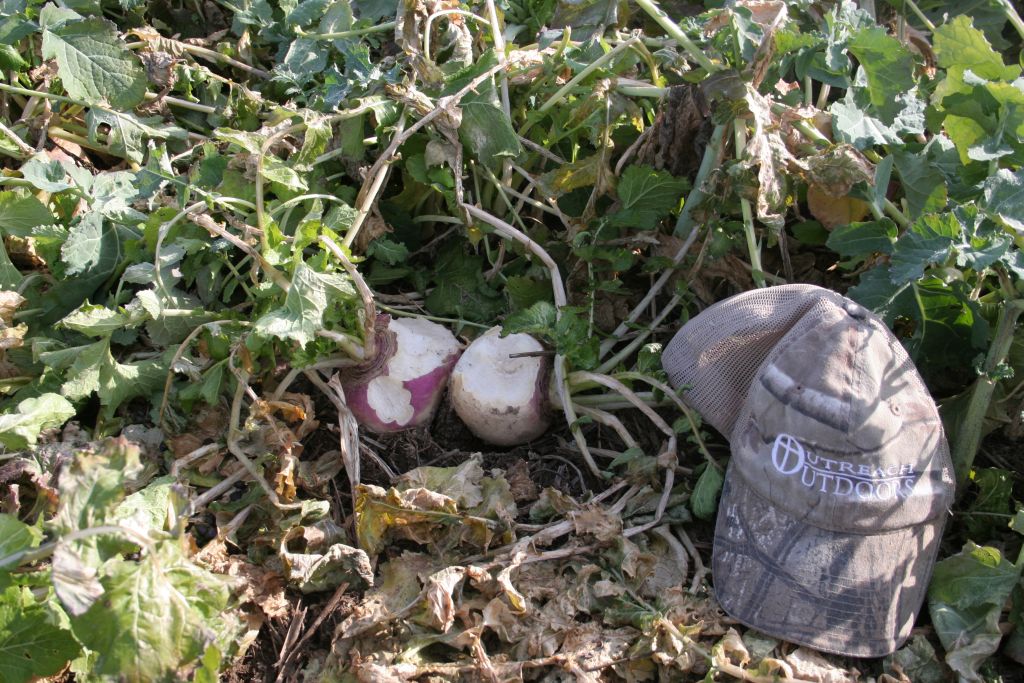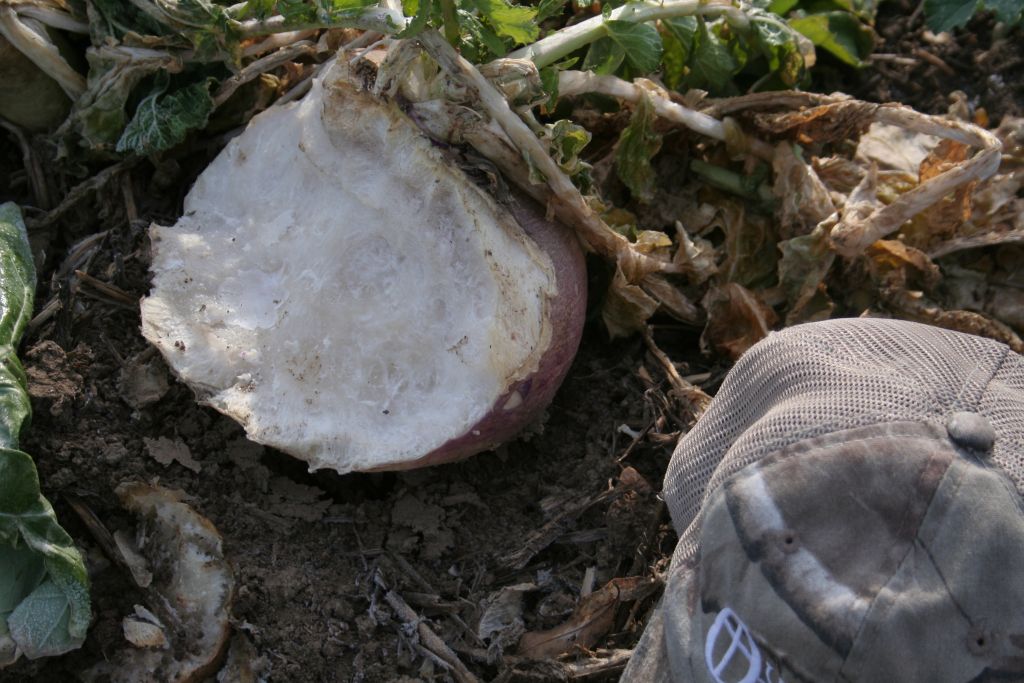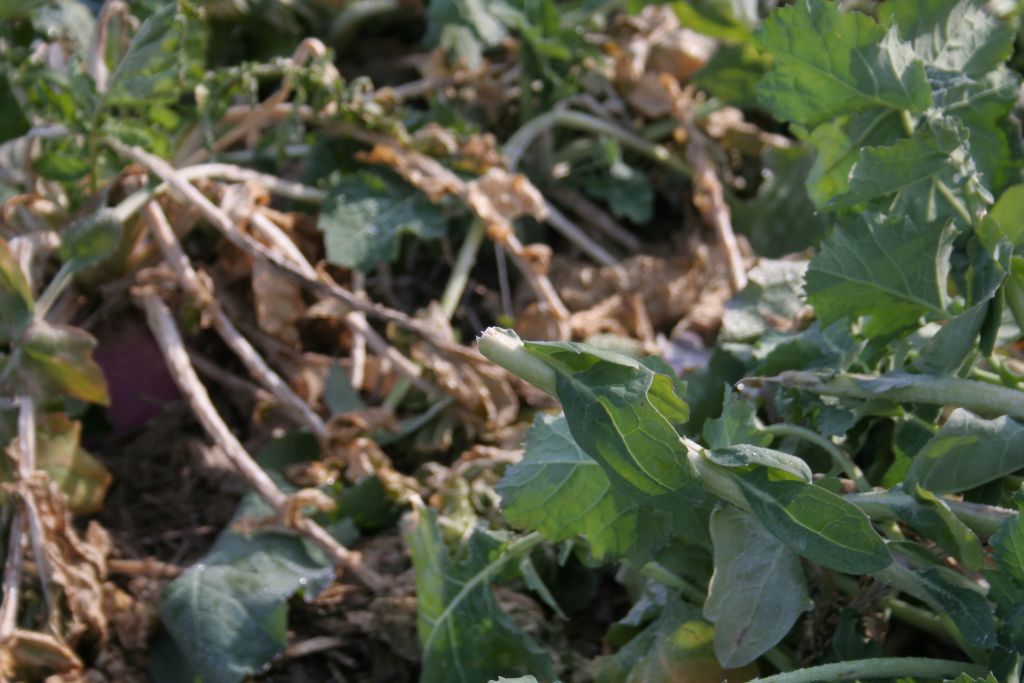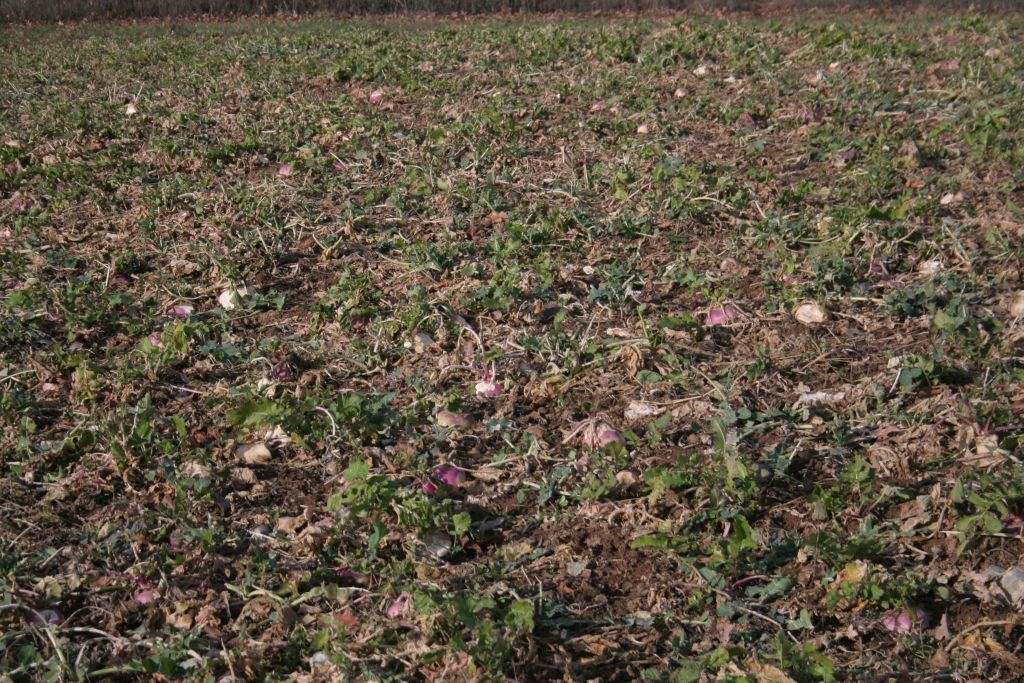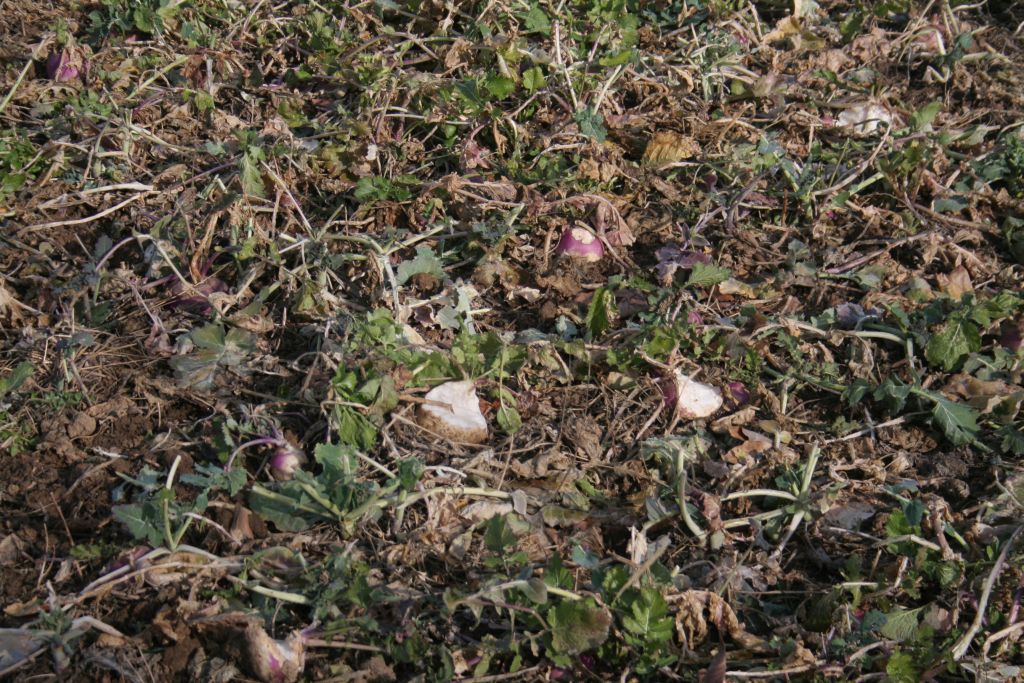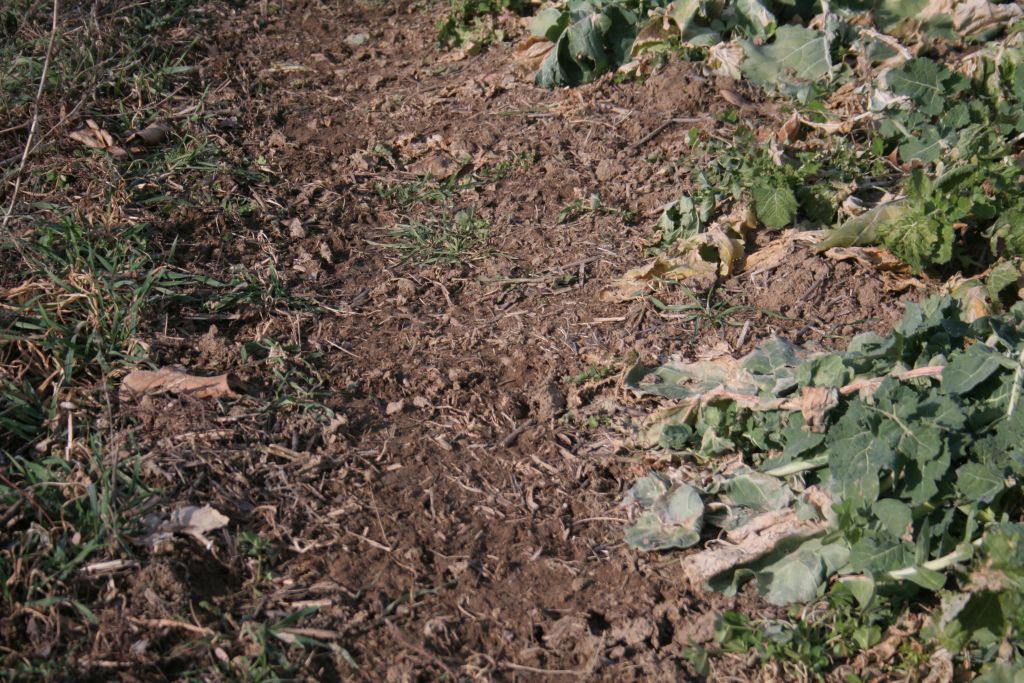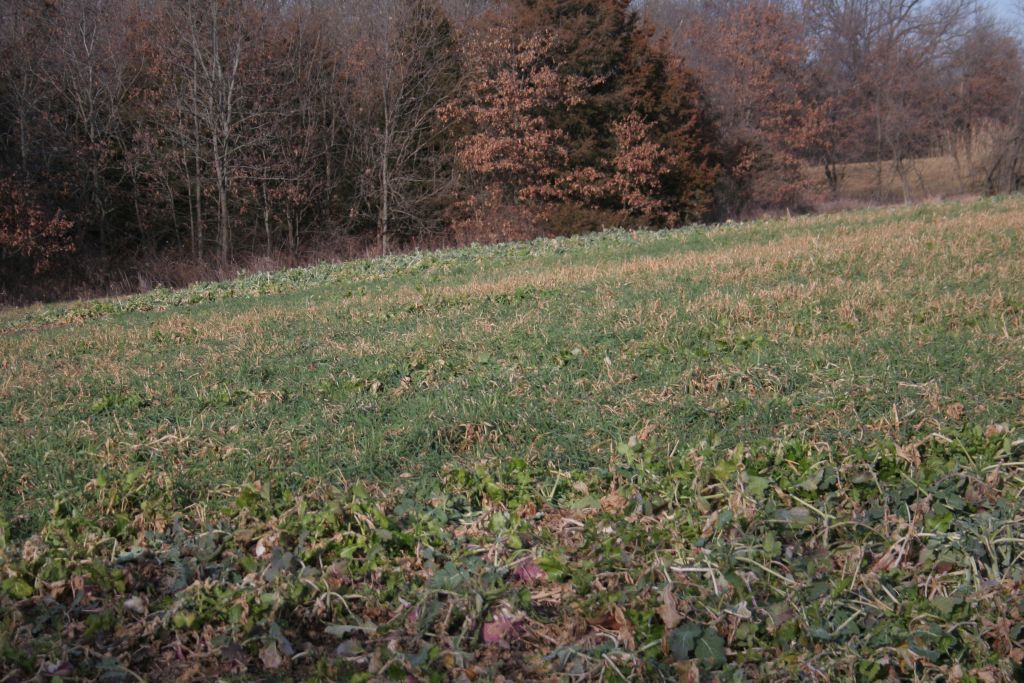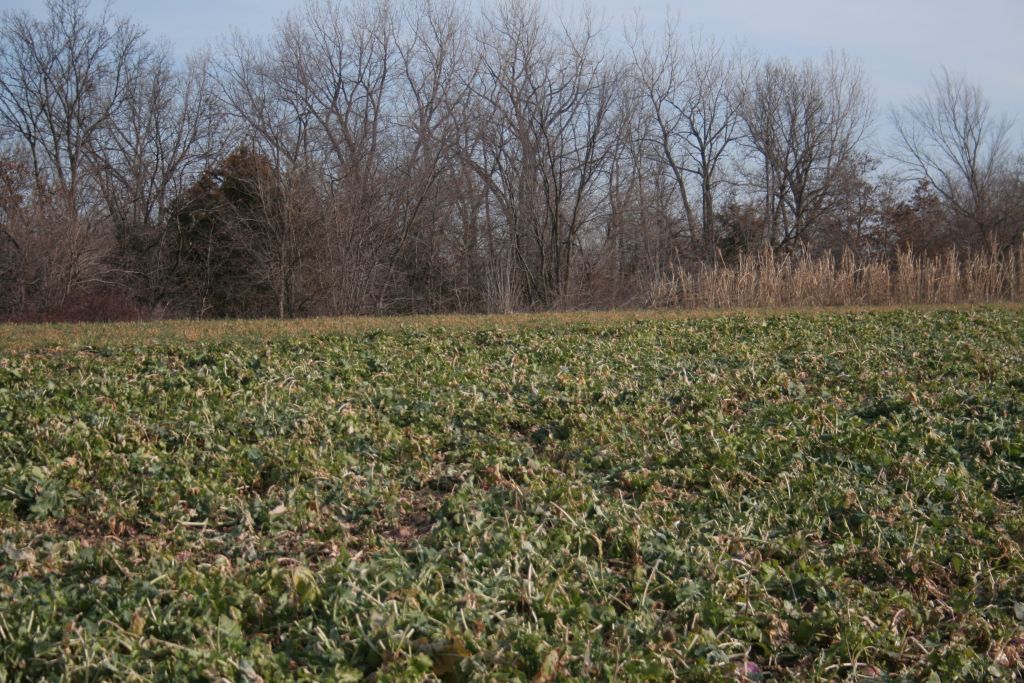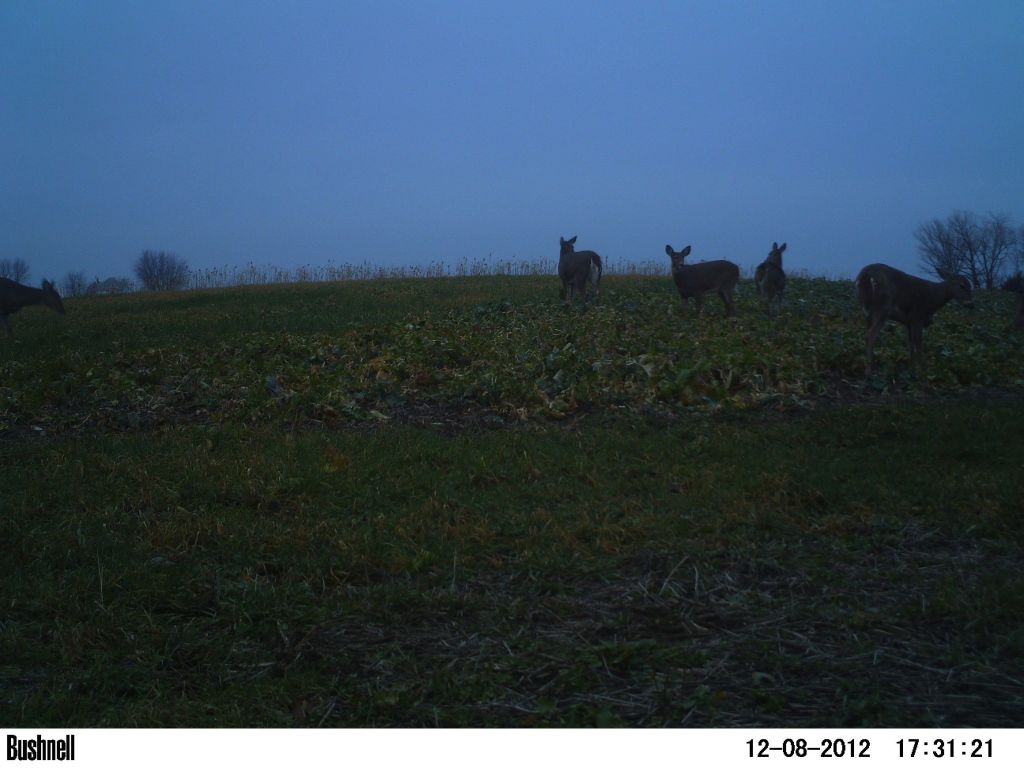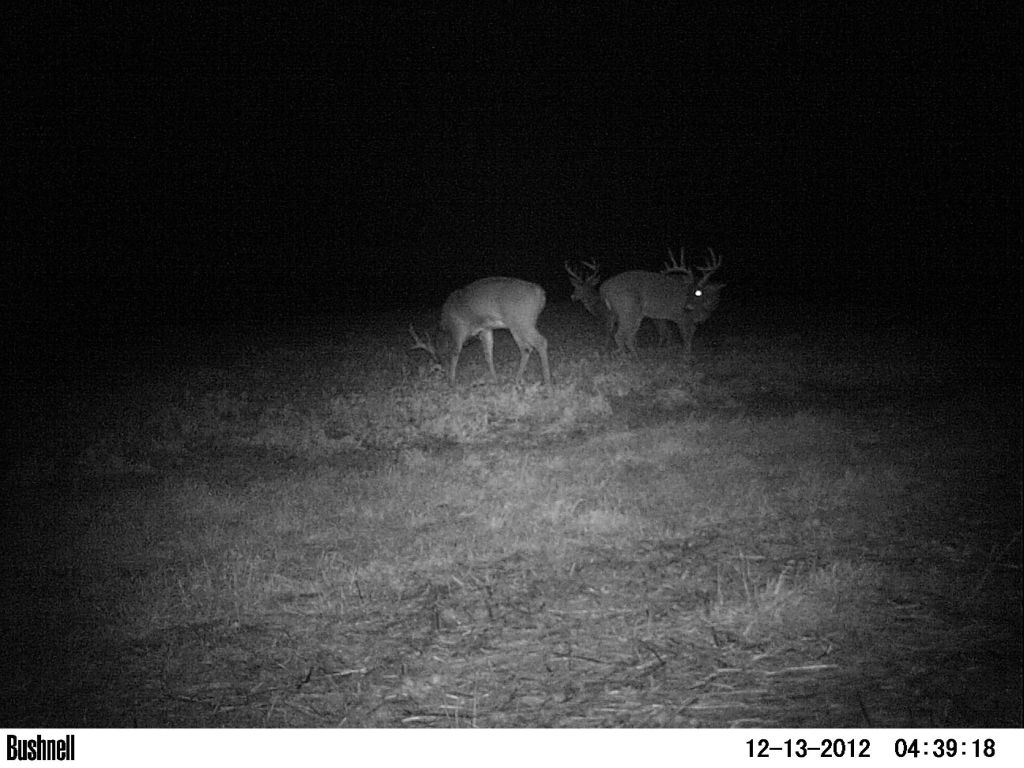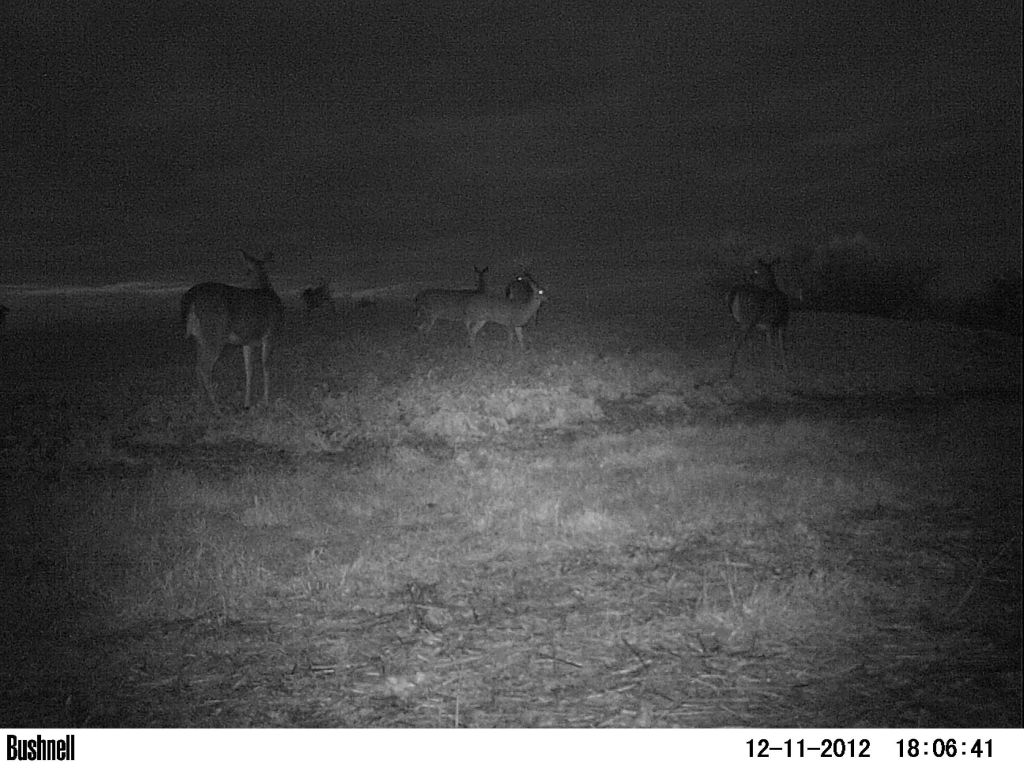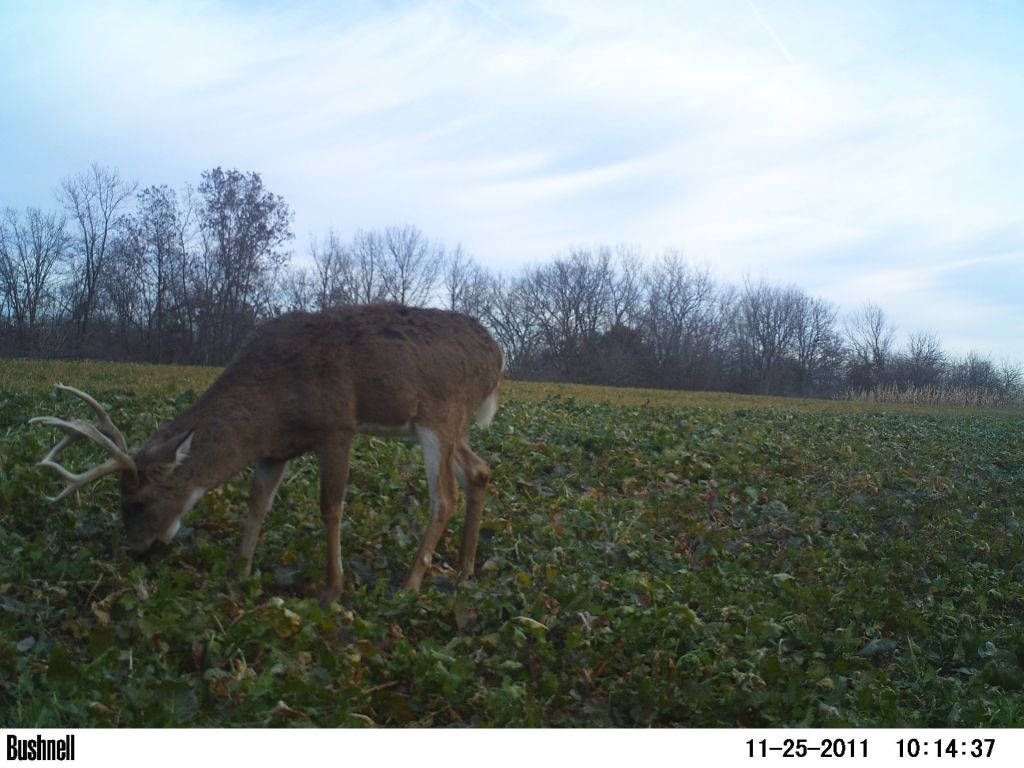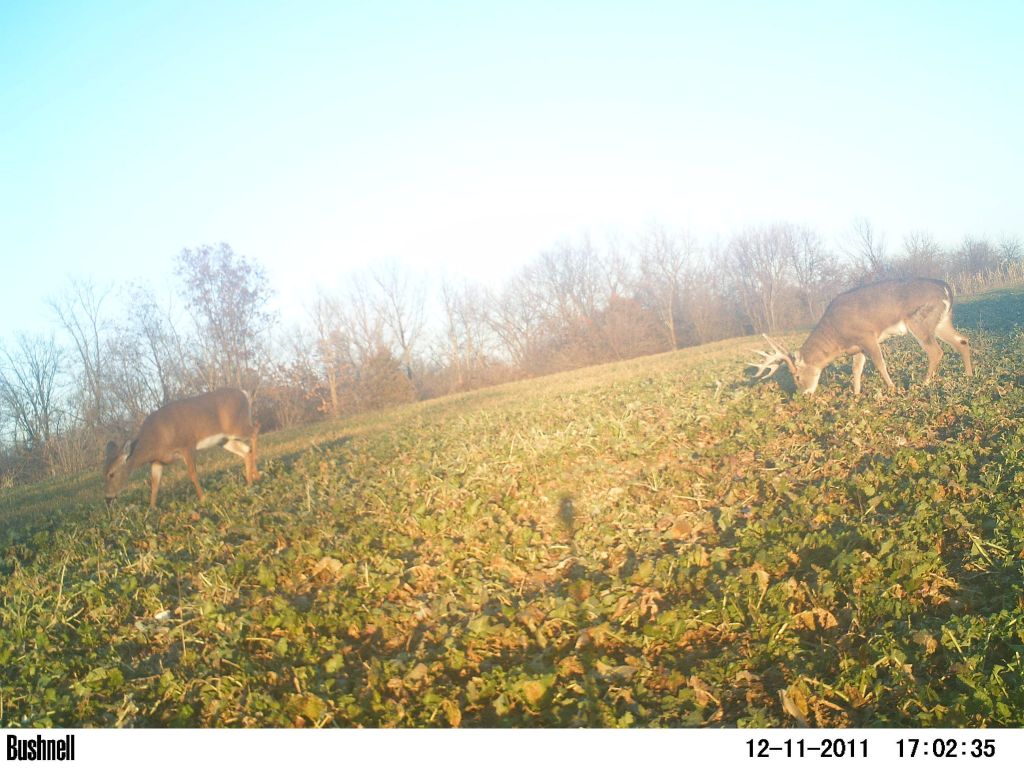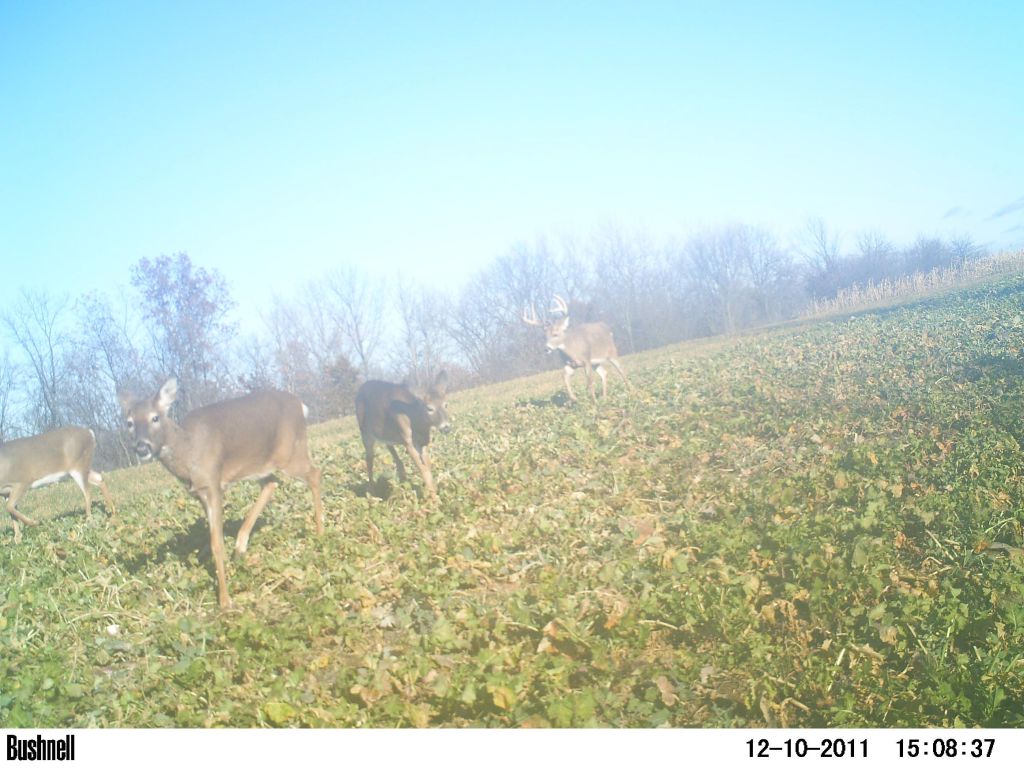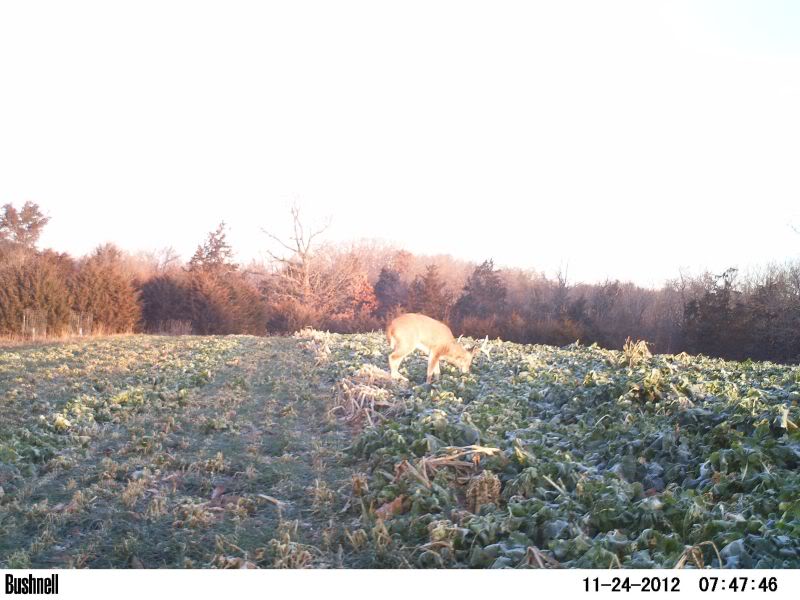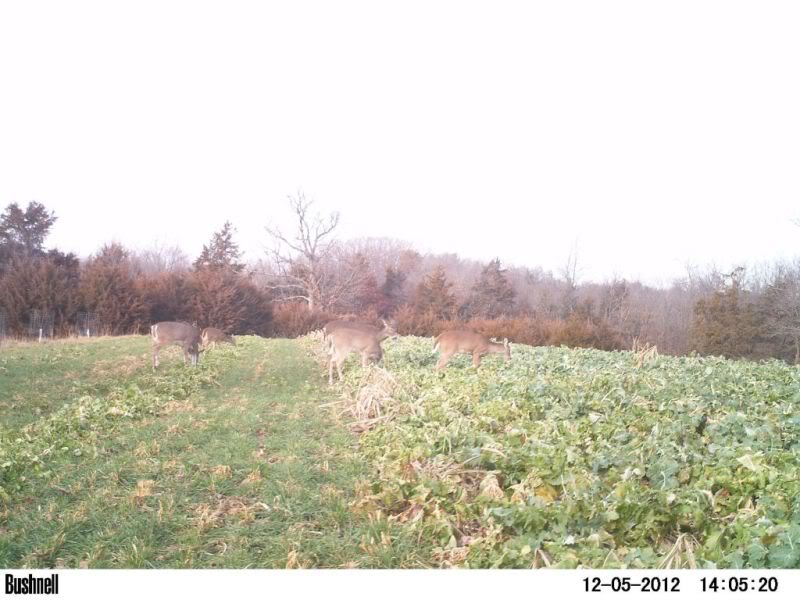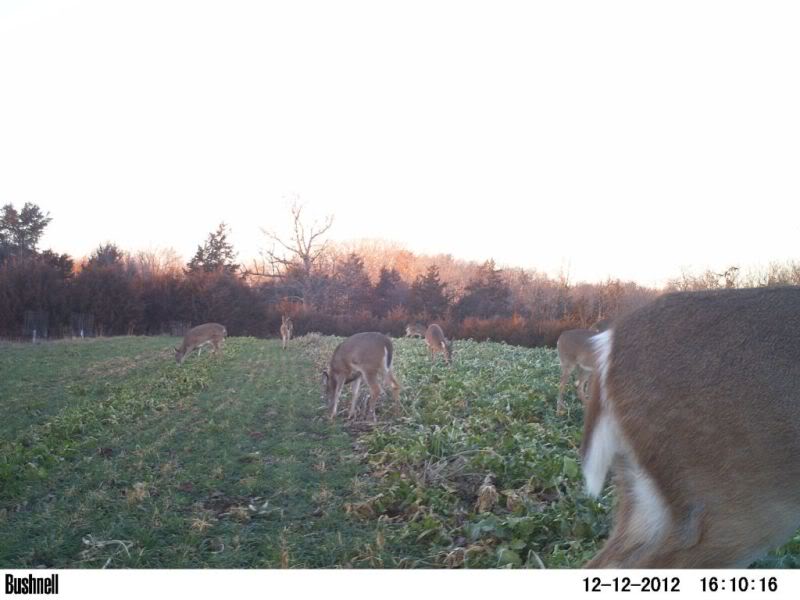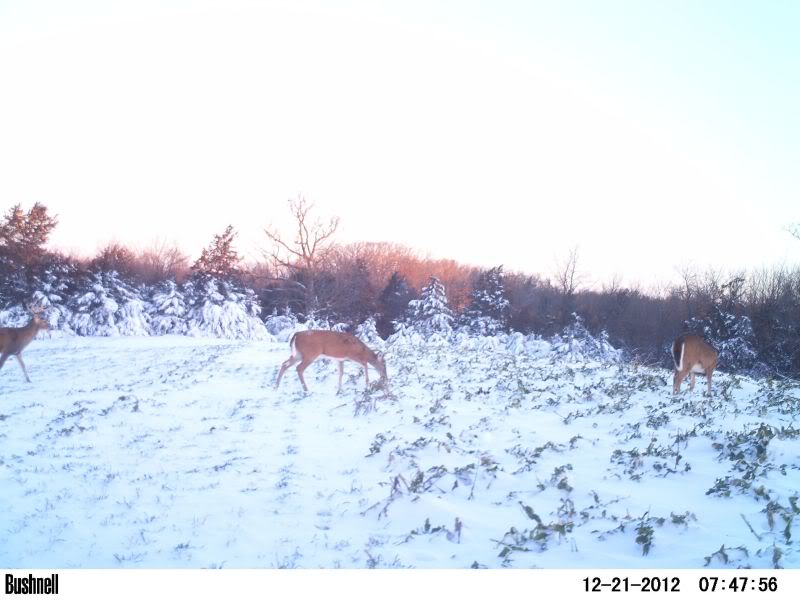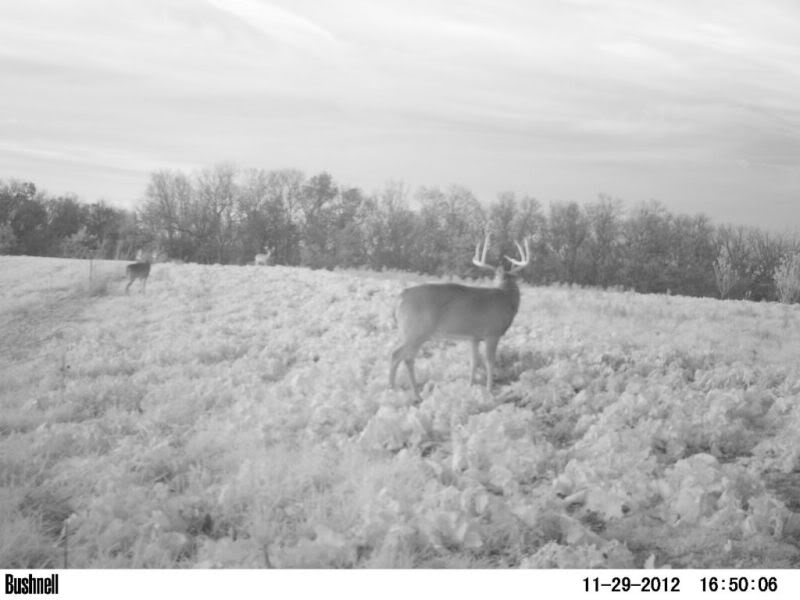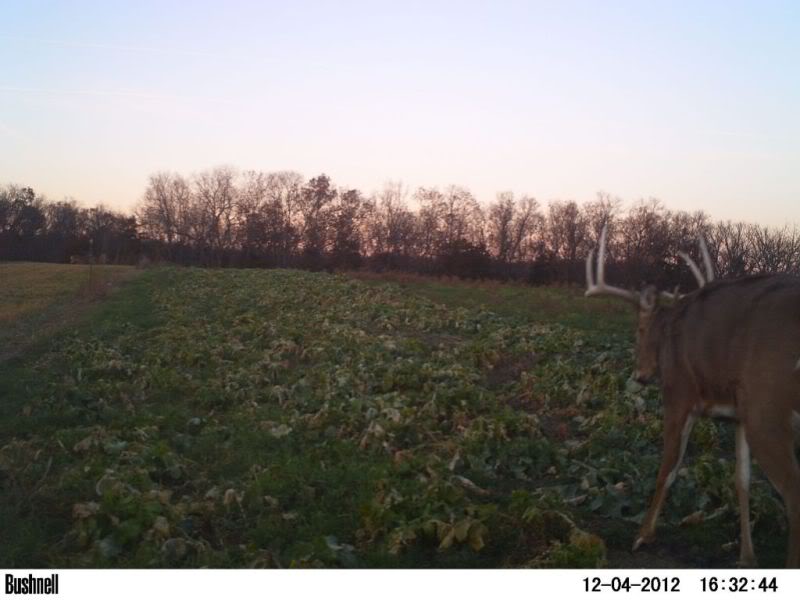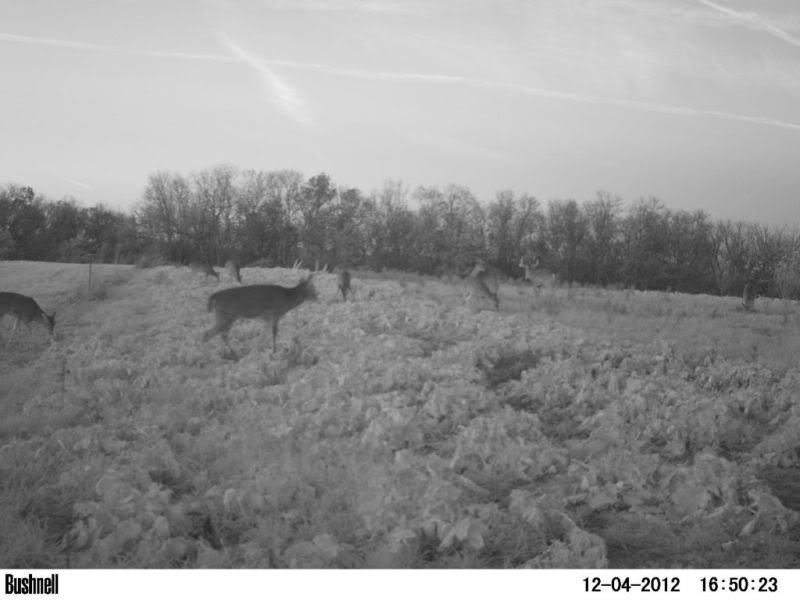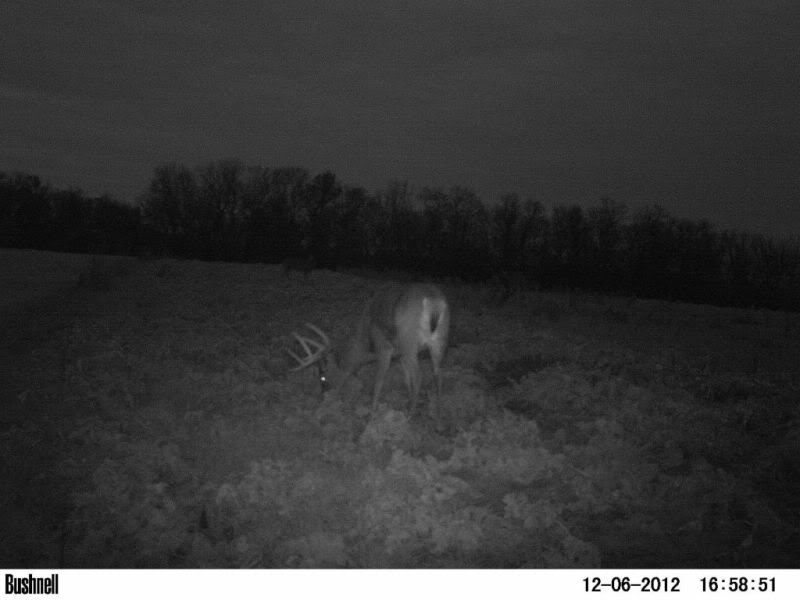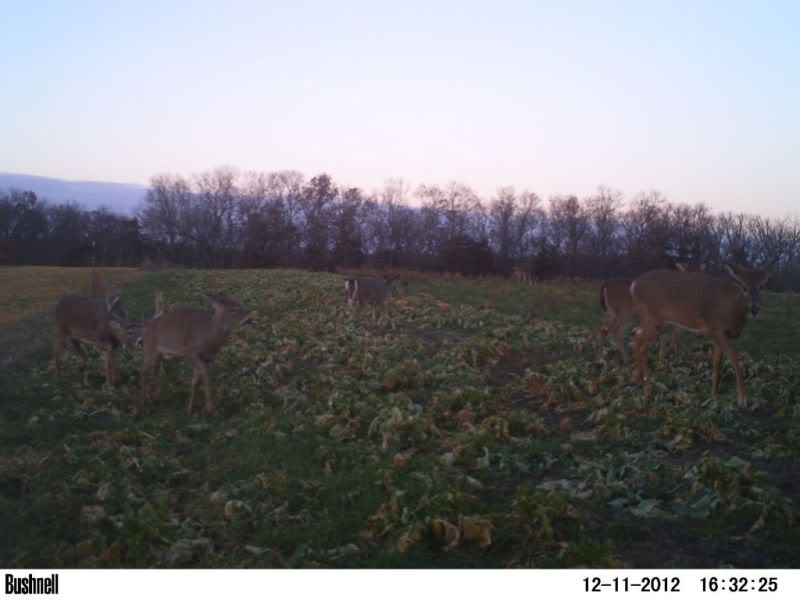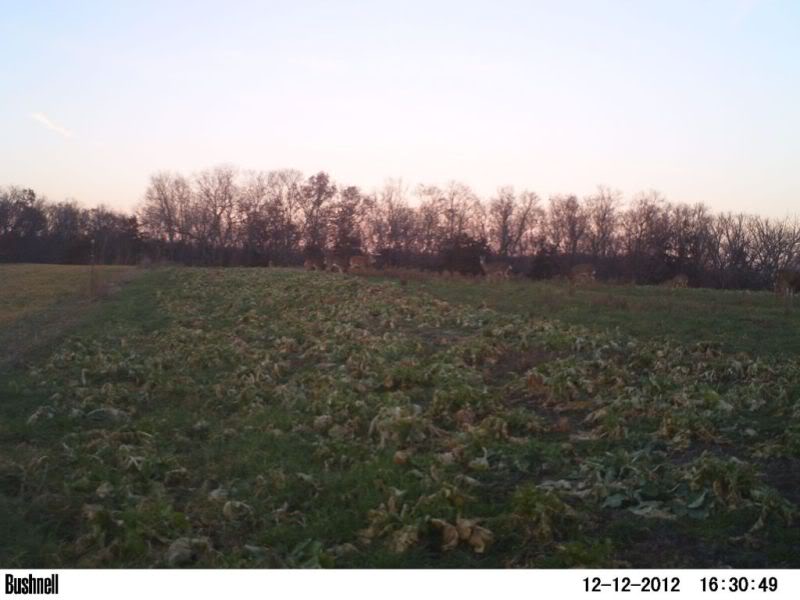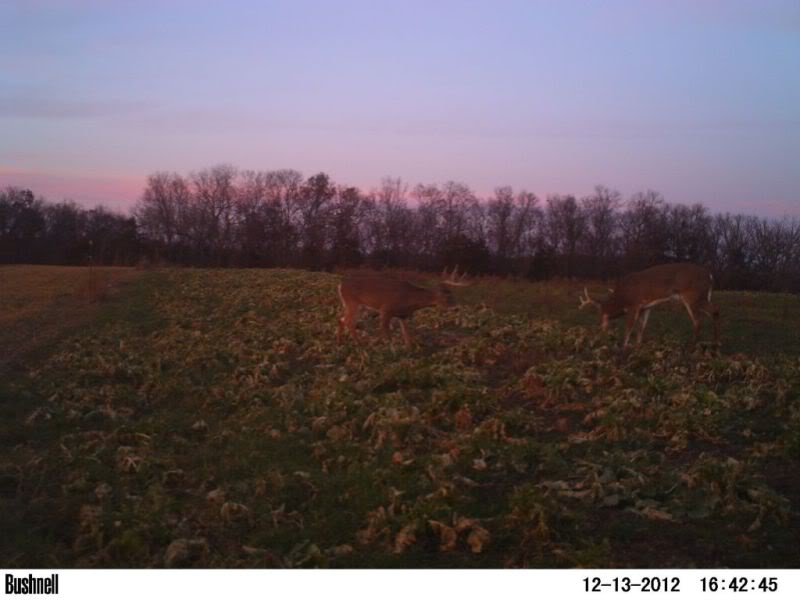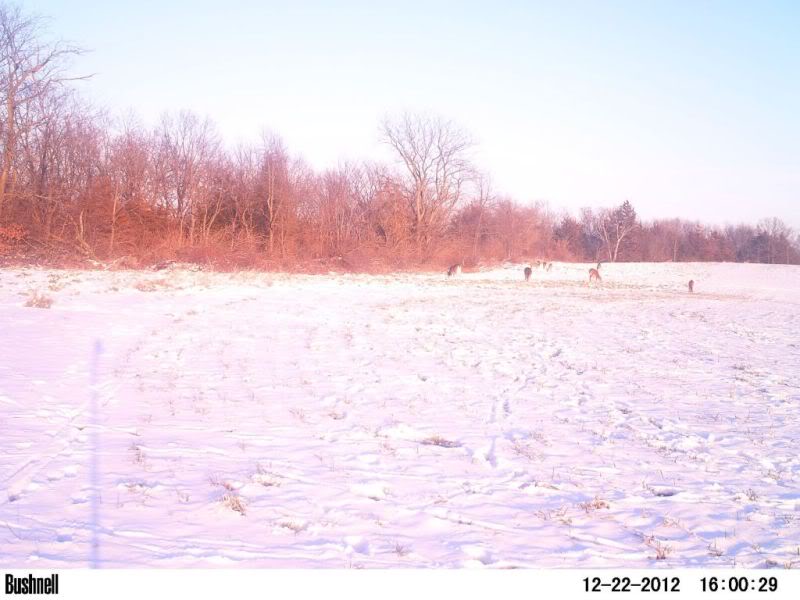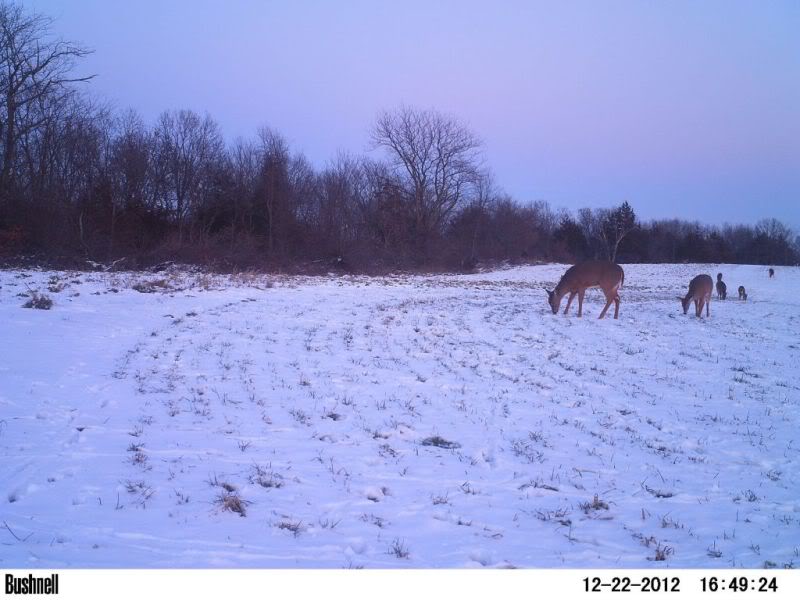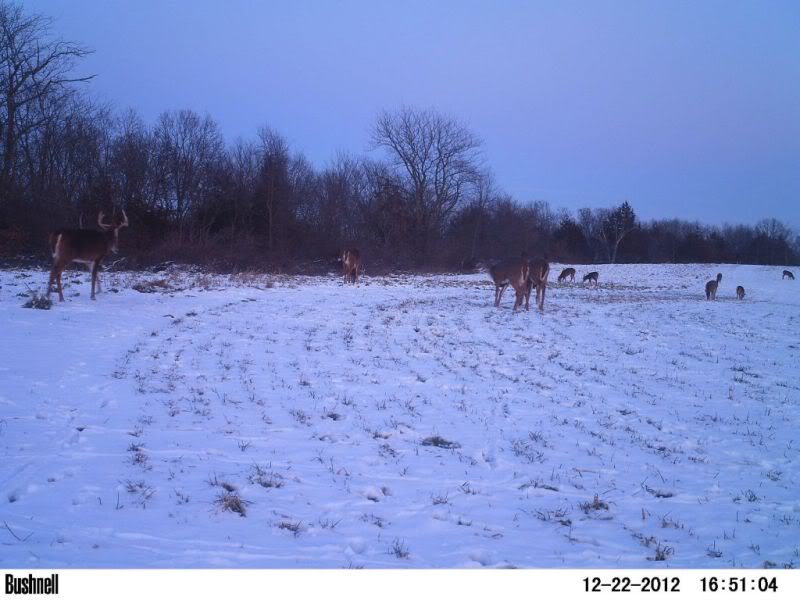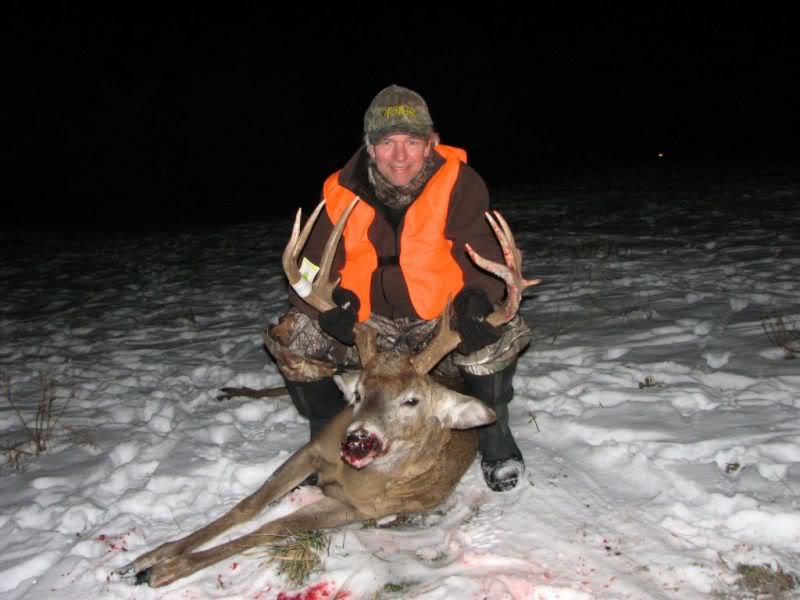dbltree
Super Moderator
October 22nd, 2012
My friend John Komp believes as I do that we shouldn't have to pay exorbitant prices for "Buck on a Bag" seed packaged in flashy bags, so he is offering good quality seeds at very reasonable prices and you can contact him thru his site: Northwoods Whitetails
John isn't sure if this is a Samson or new York turnip but either way it's a whopper with great top forage to boot!
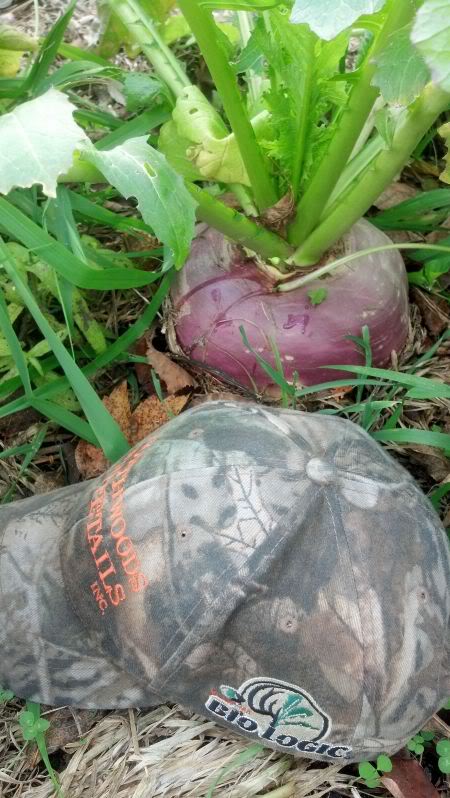
One thing I have learned in a lifetime of building habitat is to keep it simple....deer aren't as fussy as we sometimes think they are so having tried all the hybrids and buck on a bag seed mixes, i returned to the old standby's that include Purple Top turnips...like this one!
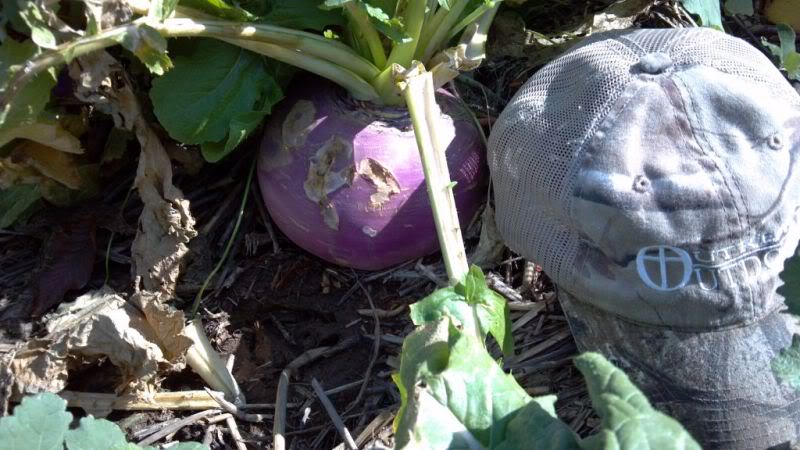
The PTT's that followed rye did very well despite the extreme drought in our area
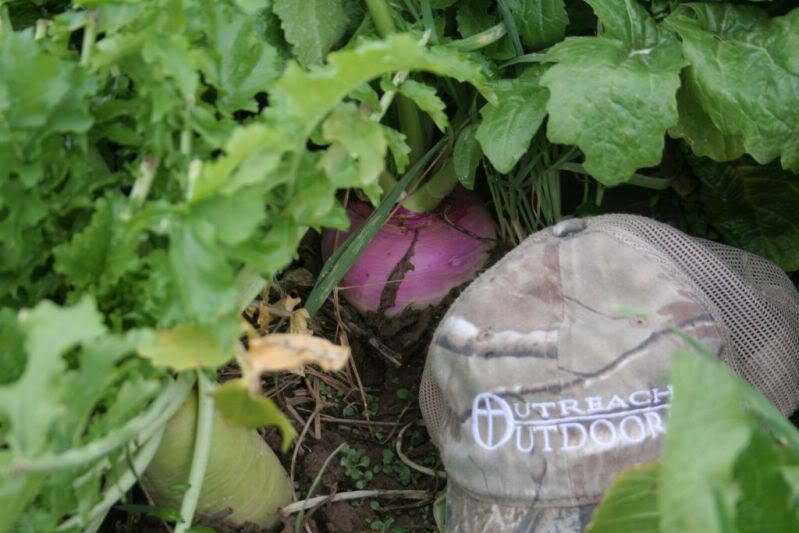
Regardless of what variety you use, turnips are an important winter food source
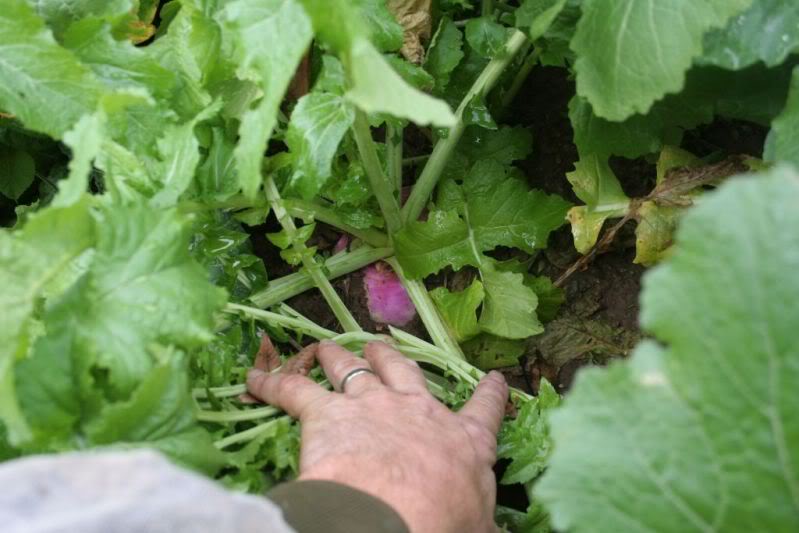
My friend Brad sent me this pic of his GH forage radish from his farm in Missouri
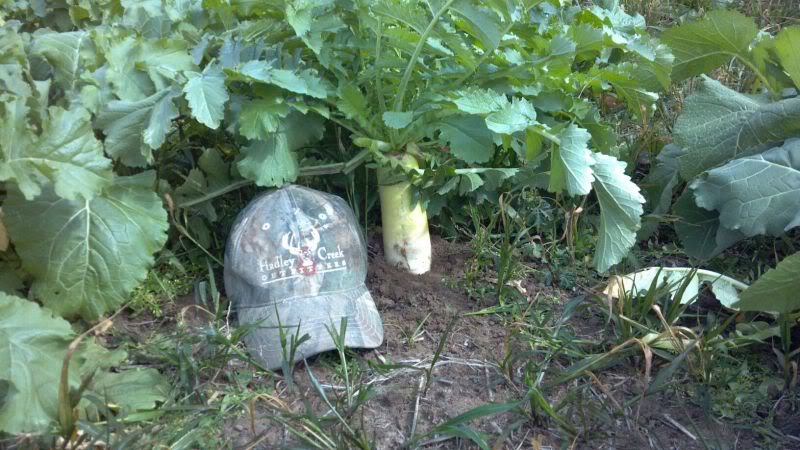
our forage radishes have also done very well
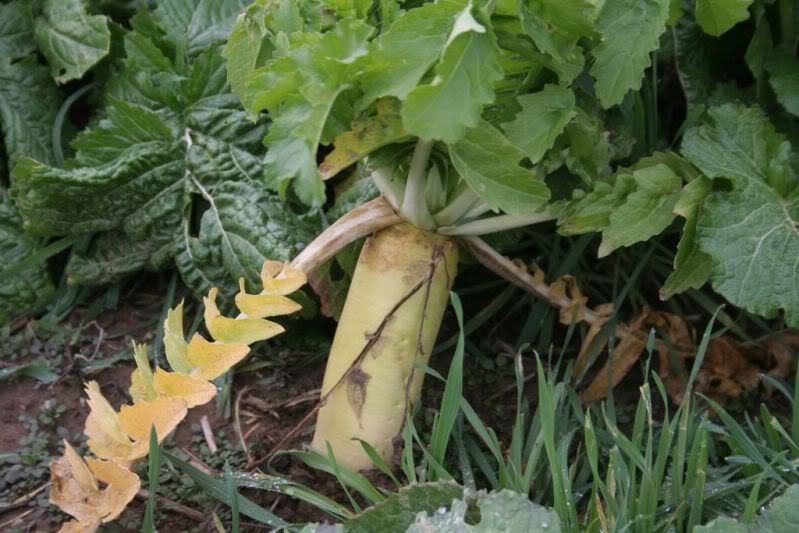
Once germinated they are pretty drought tolerant and they are the first plants to be heavily grazed by whitetails
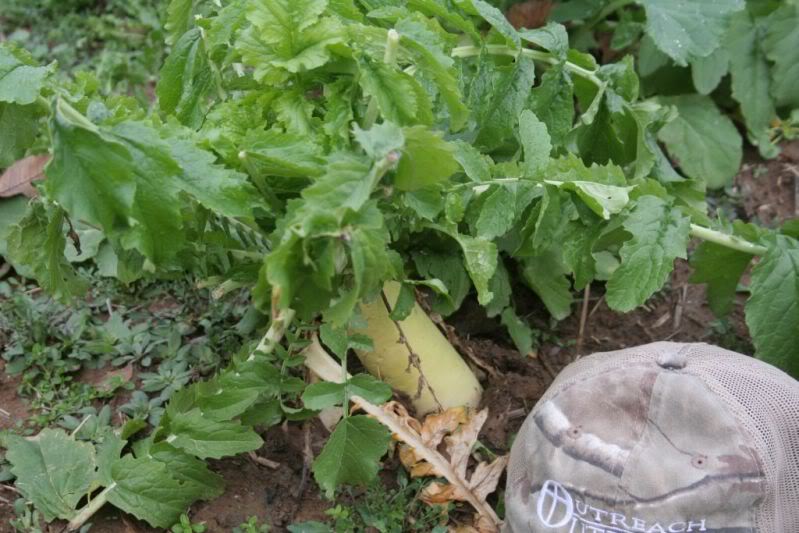
Every plant has much if not most of the top already eaten which helps prevent them from decimating the entire plot
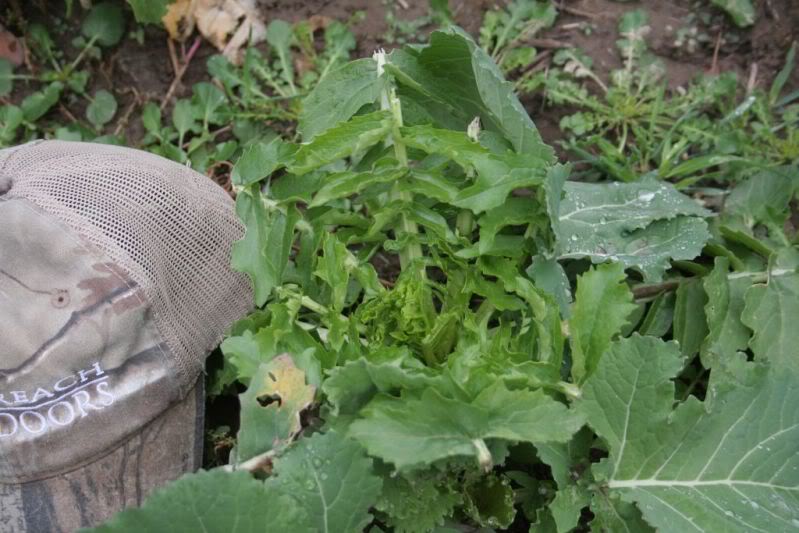
The combination of turnips, rape and radish extends the grazing with a great combination of forage and root crops that also help break up hard pan and scavenge soil nutrients.
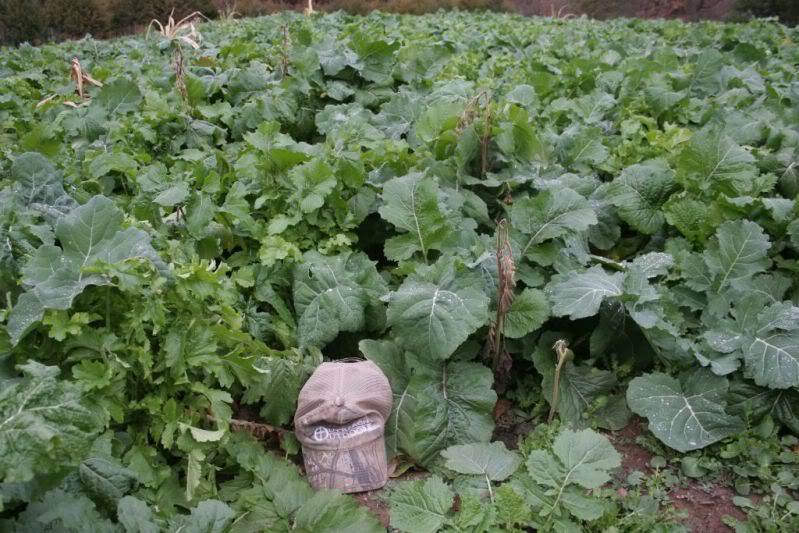
Dividing the plots into strips of brassicas and strips of the rye mix allows us to rotate crops yet allow us to have ALL the crops in the same field and the combination enables us to feed whitetails year around
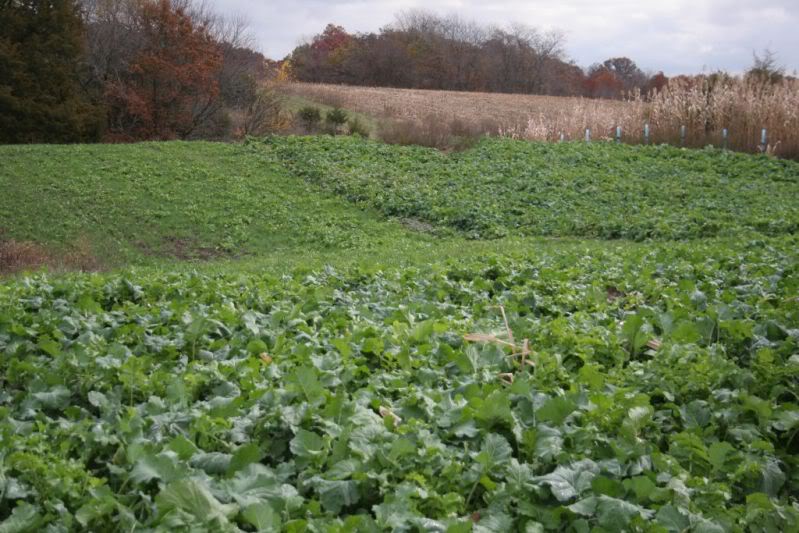
Even with clover, brassicas and the rye mix...some plots are already getting hit hard and turnips meant for winter feed...being eaten before November!!
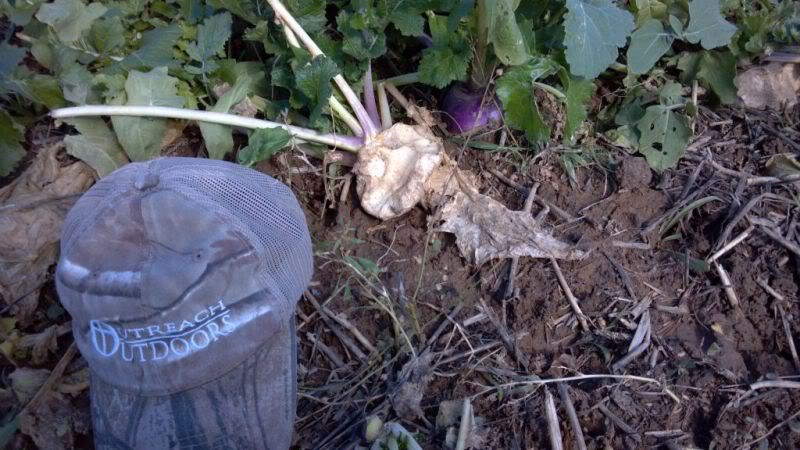
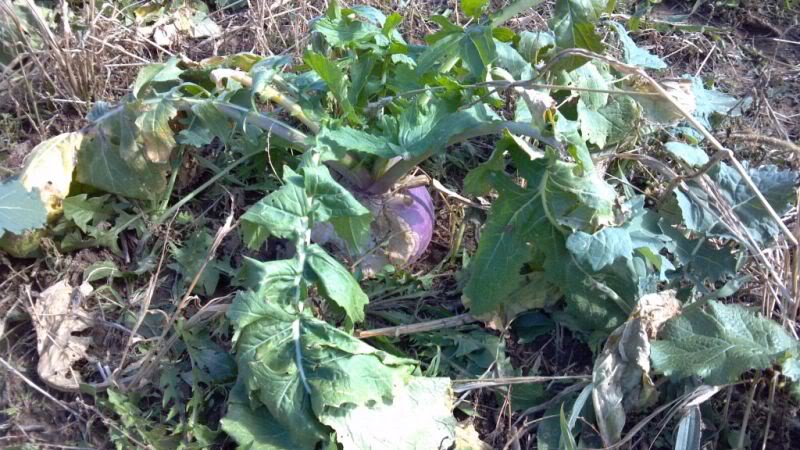
In areas like this we fertilize heavily to do our best to grow high yielding crops to keep up with the grazing
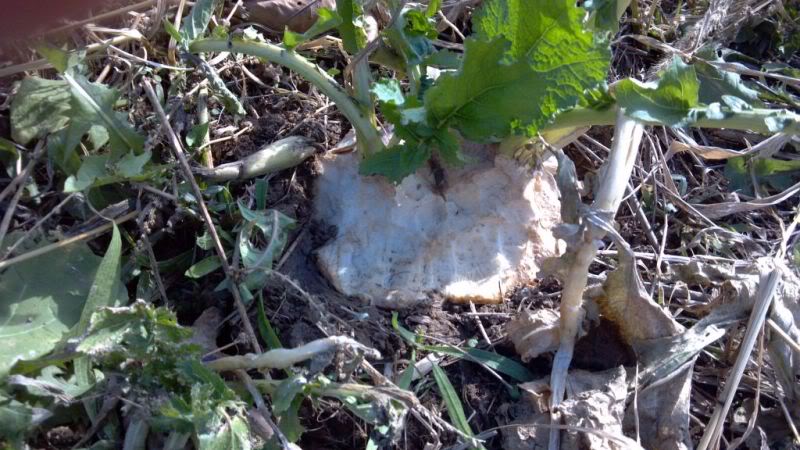
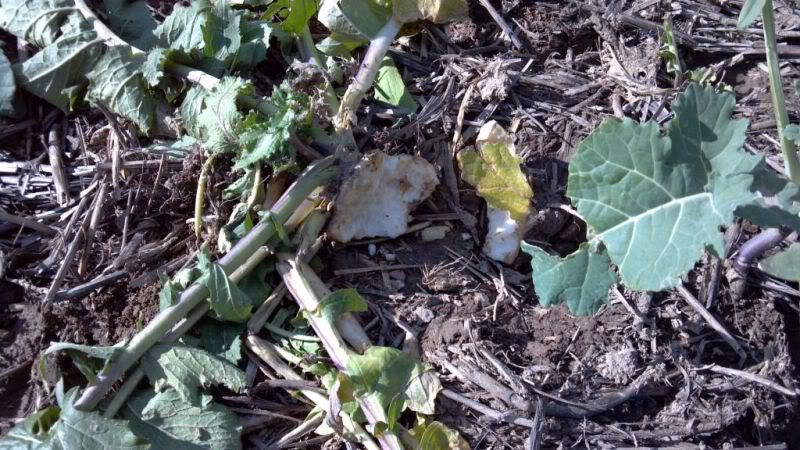
Growing crops in well screened, secure feeding ares immediately adjacent to heavy cover insures deer will quickly adapt to feeding there and only there...standing corn is only a short distance away, yet these deer refuse to leave their comfort zone and the copious amounts of clover, brassicas and rye mix they find here.
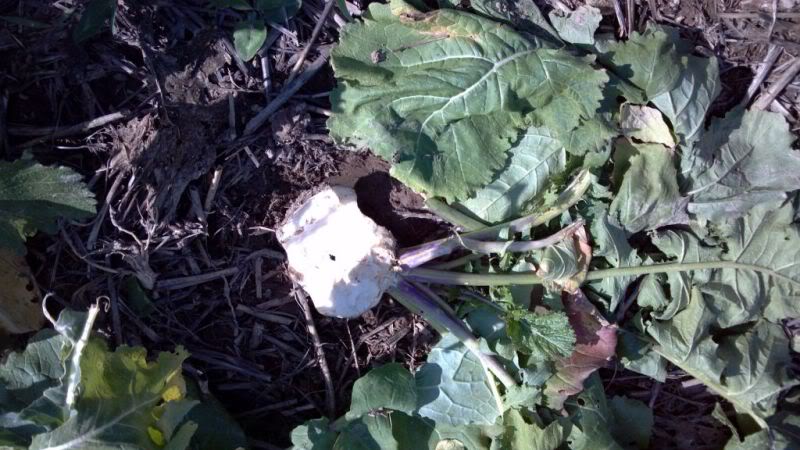
Corn stubble and standing beans aren't enough to draw these bucks out our combination plots!
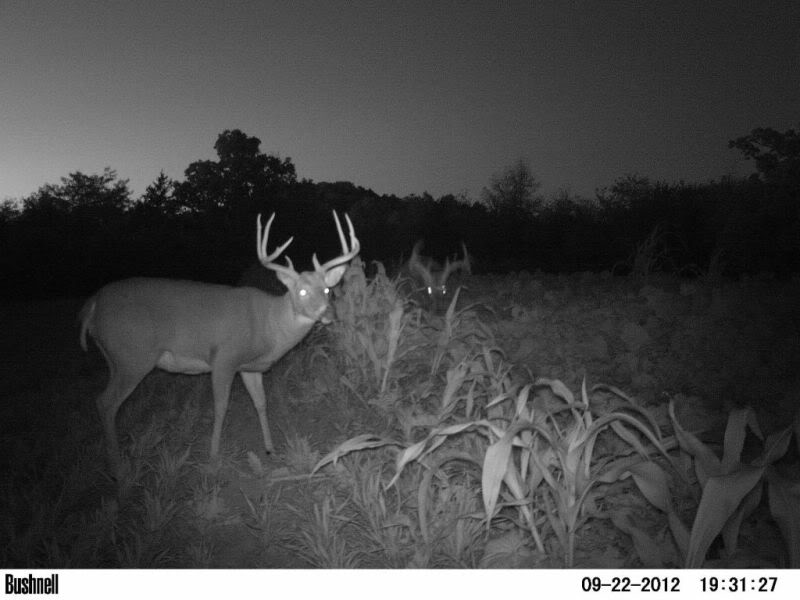
If you are not having this kind of success....then it's time re-examine your entire habitat program...NOT just your food sources
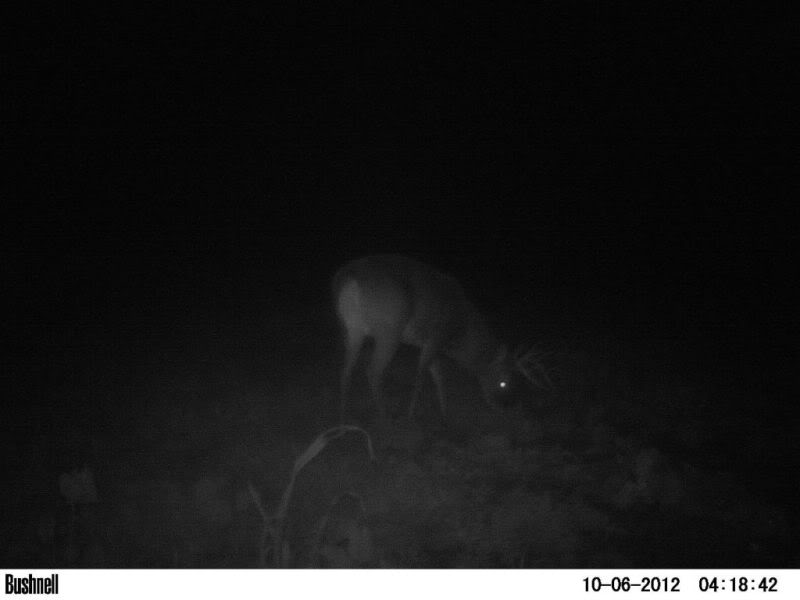
The answer is in the quality of cover and the proximity of the food source to the cover
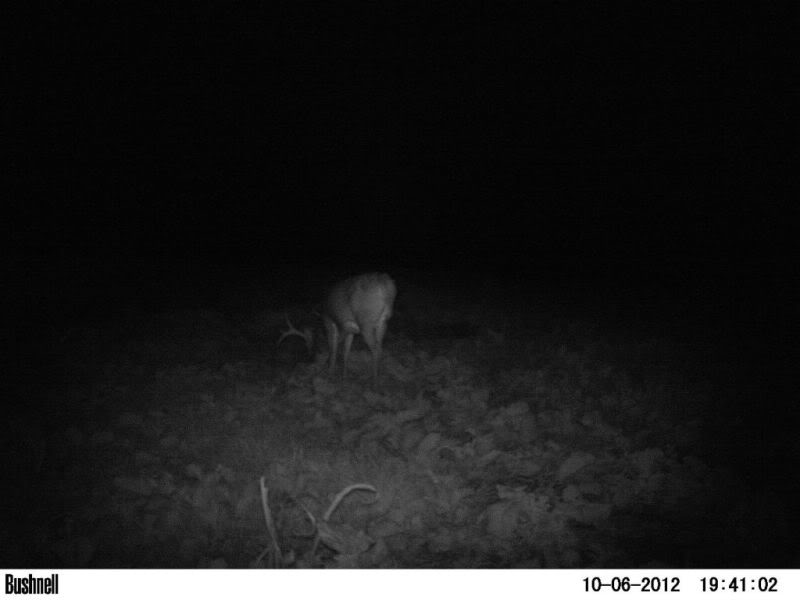
Too many refuse to acknowledge this and will never achieve the kind of hoped for success that we do by putting cover first
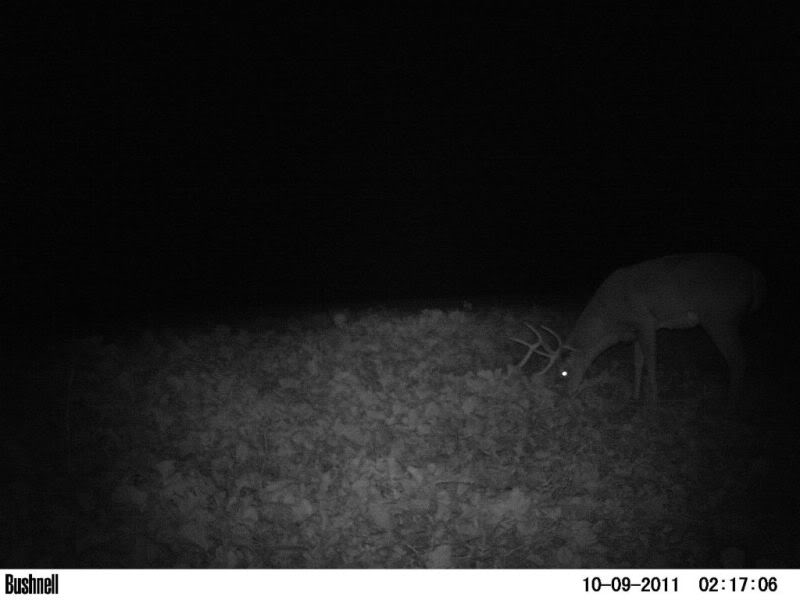
Food is important...but the answer does not lie within a shiny and expensive bag of seed
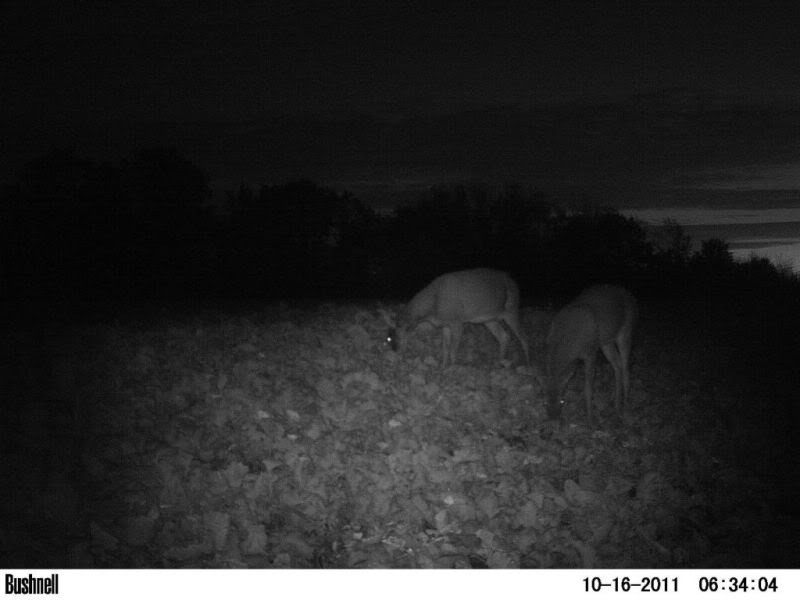
But rather in a lot of planning and hard work creating optimum cover and then...they will eat nearly anything you plant for them....
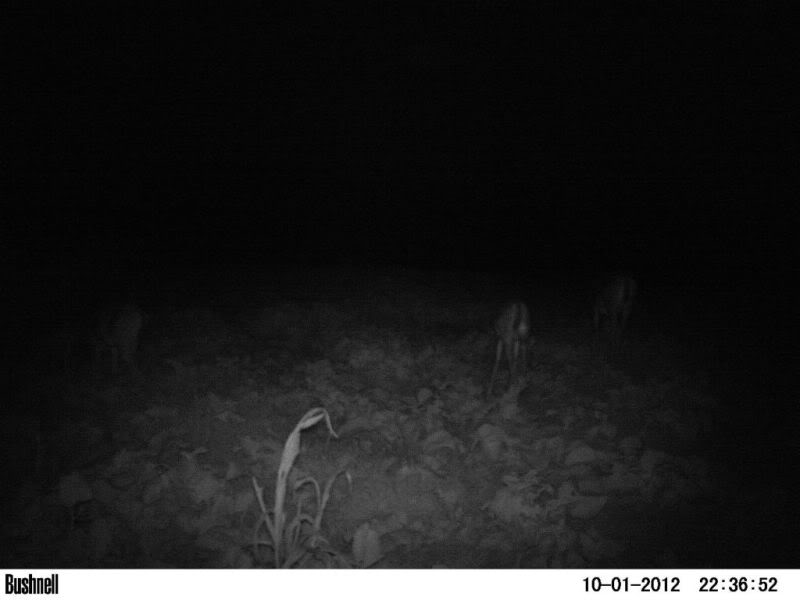
Look over the timber management, hinging, tree planting and native warm season grass threads and see what you can do to improve your cover and then add combination crops to keep your whitetails fed year around...you'll never regret doing so...
My friend John Komp believes as I do that we shouldn't have to pay exorbitant prices for "Buck on a Bag" seed packaged in flashy bags, so he is offering good quality seeds at very reasonable prices and you can contact him thru his site: Northwoods Whitetails
John isn't sure if this is a Samson or new York turnip but either way it's a whopper with great top forage to boot!

One thing I have learned in a lifetime of building habitat is to keep it simple....deer aren't as fussy as we sometimes think they are so having tried all the hybrids and buck on a bag seed mixes, i returned to the old standby's that include Purple Top turnips...like this one!

The PTT's that followed rye did very well despite the extreme drought in our area

Regardless of what variety you use, turnips are an important winter food source

My friend Brad sent me this pic of his GH forage radish from his farm in Missouri

our forage radishes have also done very well

Once germinated they are pretty drought tolerant and they are the first plants to be heavily grazed by whitetails

Every plant has much if not most of the top already eaten which helps prevent them from decimating the entire plot

The combination of turnips, rape and radish extends the grazing with a great combination of forage and root crops that also help break up hard pan and scavenge soil nutrients.

Dividing the plots into strips of brassicas and strips of the rye mix allows us to rotate crops yet allow us to have ALL the crops in the same field and the combination enables us to feed whitetails year around

Even with clover, brassicas and the rye mix...some plots are already getting hit hard and turnips meant for winter feed...being eaten before November!!


In areas like this we fertilize heavily to do our best to grow high yielding crops to keep up with the grazing


Growing crops in well screened, secure feeding ares immediately adjacent to heavy cover insures deer will quickly adapt to feeding there and only there...standing corn is only a short distance away, yet these deer refuse to leave their comfort zone and the copious amounts of clover, brassicas and rye mix they find here.

Corn stubble and standing beans aren't enough to draw these bucks out our combination plots!

If you are not having this kind of success....then it's time re-examine your entire habitat program...NOT just your food sources

The answer is in the quality of cover and the proximity of the food source to the cover

Too many refuse to acknowledge this and will never achieve the kind of hoped for success that we do by putting cover first

Food is important...but the answer does not lie within a shiny and expensive bag of seed

But rather in a lot of planning and hard work creating optimum cover and then...they will eat nearly anything you plant for them....

Look over the timber management, hinging, tree planting and native warm season grass threads and see what you can do to improve your cover and then add combination crops to keep your whitetails fed year around...you'll never regret doing so...
Plant ALL in one plot in strips or blocks
Alice, Kopu II, Durana (or comparable) white clover 10% of plot, sow at 6#'s per acre with the rye combination in the fall or in the spring with oats and berseem clover. Correct Ph and P&K with soil tests
Brassicas in 45% of plot
Purple Top Turnips 3#
Dwarf Essex Rape 2#
GroundHog Forage radish 5#
Plant in mid to late July in most Midwest states, or 60-90 days before your first killing frost, Use 200#'s of 46-0-0 urea and 400#'s of 6-28-28 per acre. Follow the dead brassicas with oats and berseem or crimson clover in mid spring at 60#'s oats and 12-15#'s berseem clover and/or 50#'s of chickling vetch)
Cereal Grain combo in 45% of plot
Winter rye 50-80#'s per acre (56#'s = a bushel)
Spring oats 80-120#'s per acre (32#'s = a bushel)
Frostmaster Winter Peas or 4010/6040 Forage peas 20-80#'s per acre
Red Clover 8-12#'s per acre or white clover at 6#'s per acre (or 20-40 pounds hairy vetch and 20-30#'s crimson clover on sandy soils)
Groundhog Forage Radish 5#'s per acre
Plant in late August to early September, if following well fertilized brassicas use 100 - 200#'s of urea, if starting a new plot add 400#'s of 6-28-28
Rotate the brassicas and rye combo each year












